


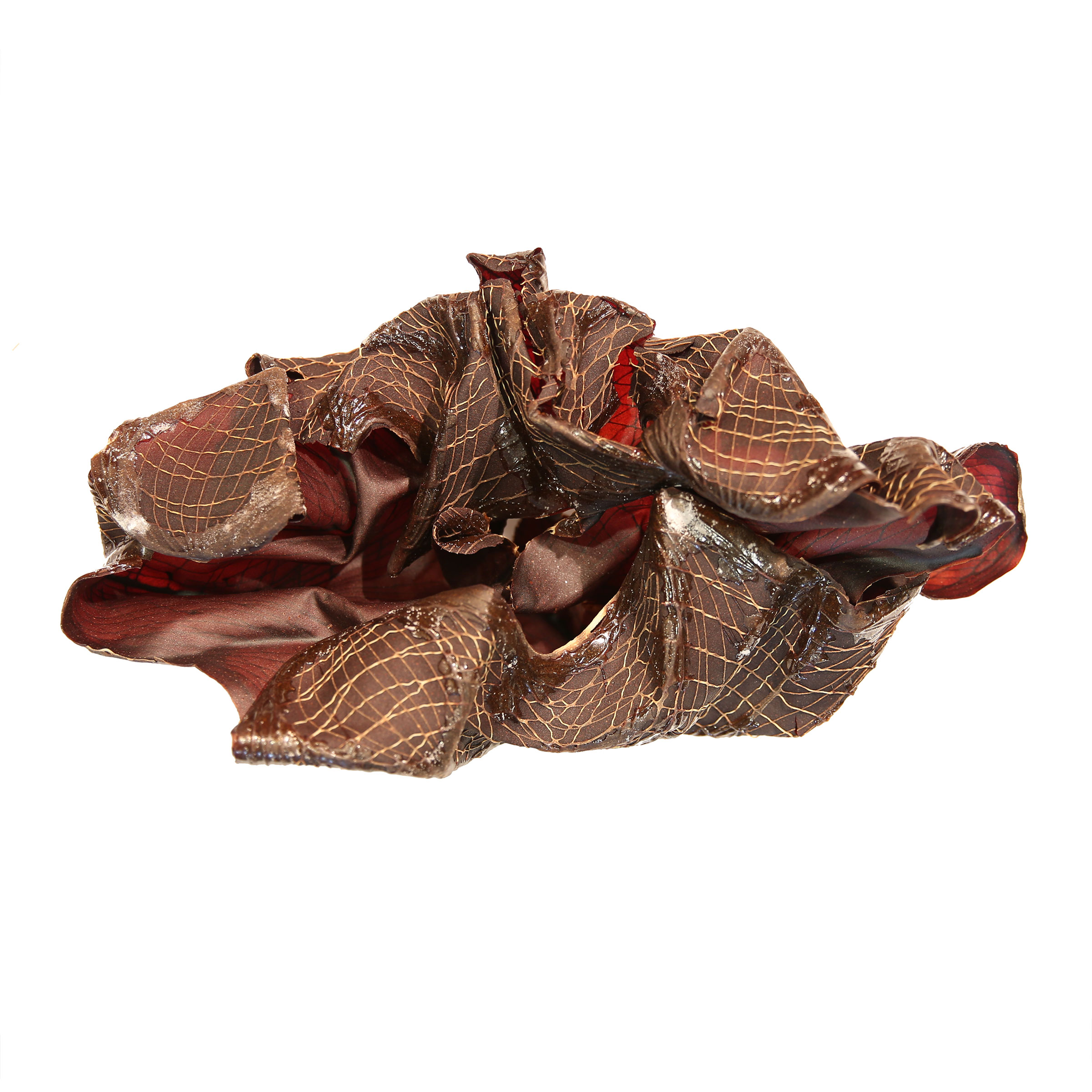

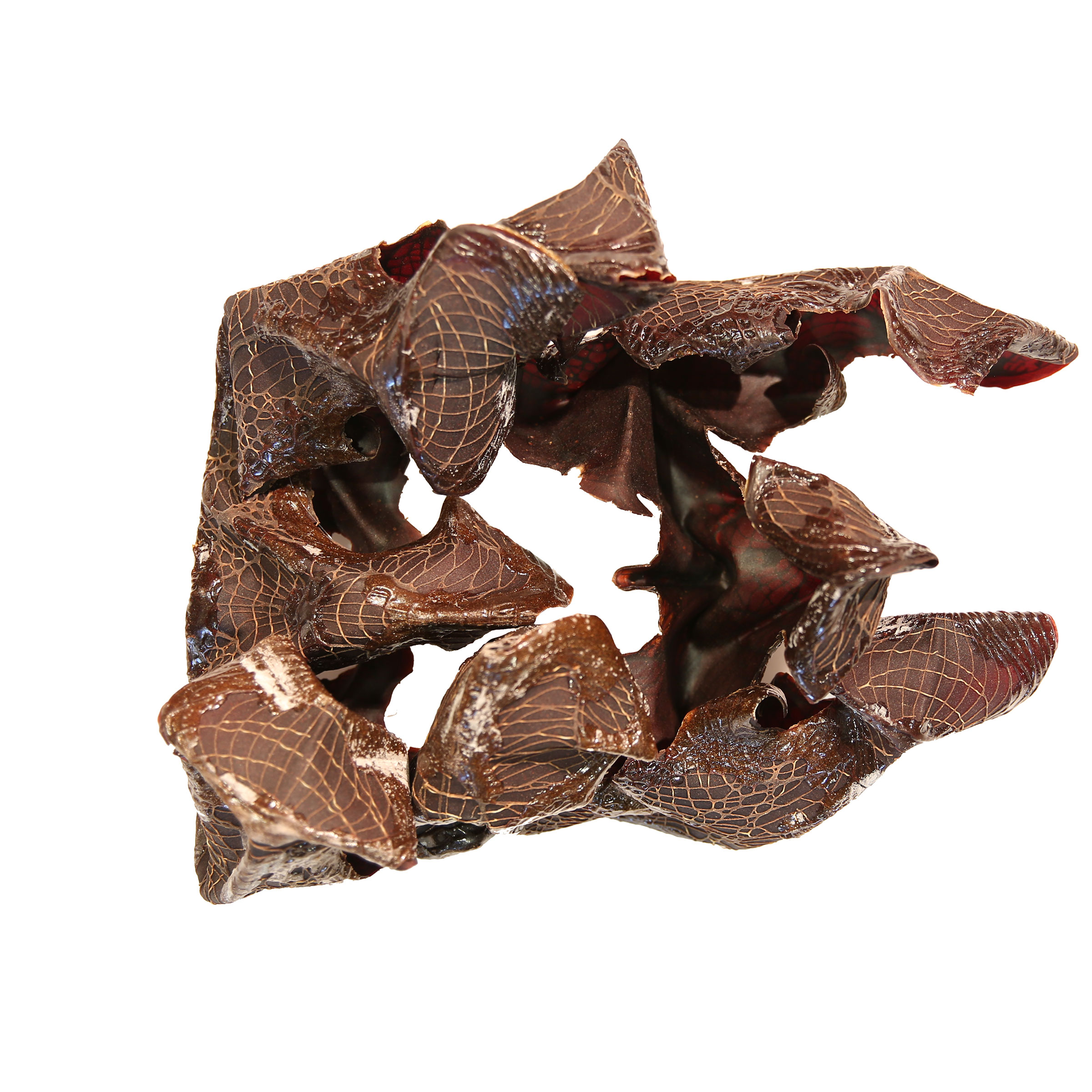



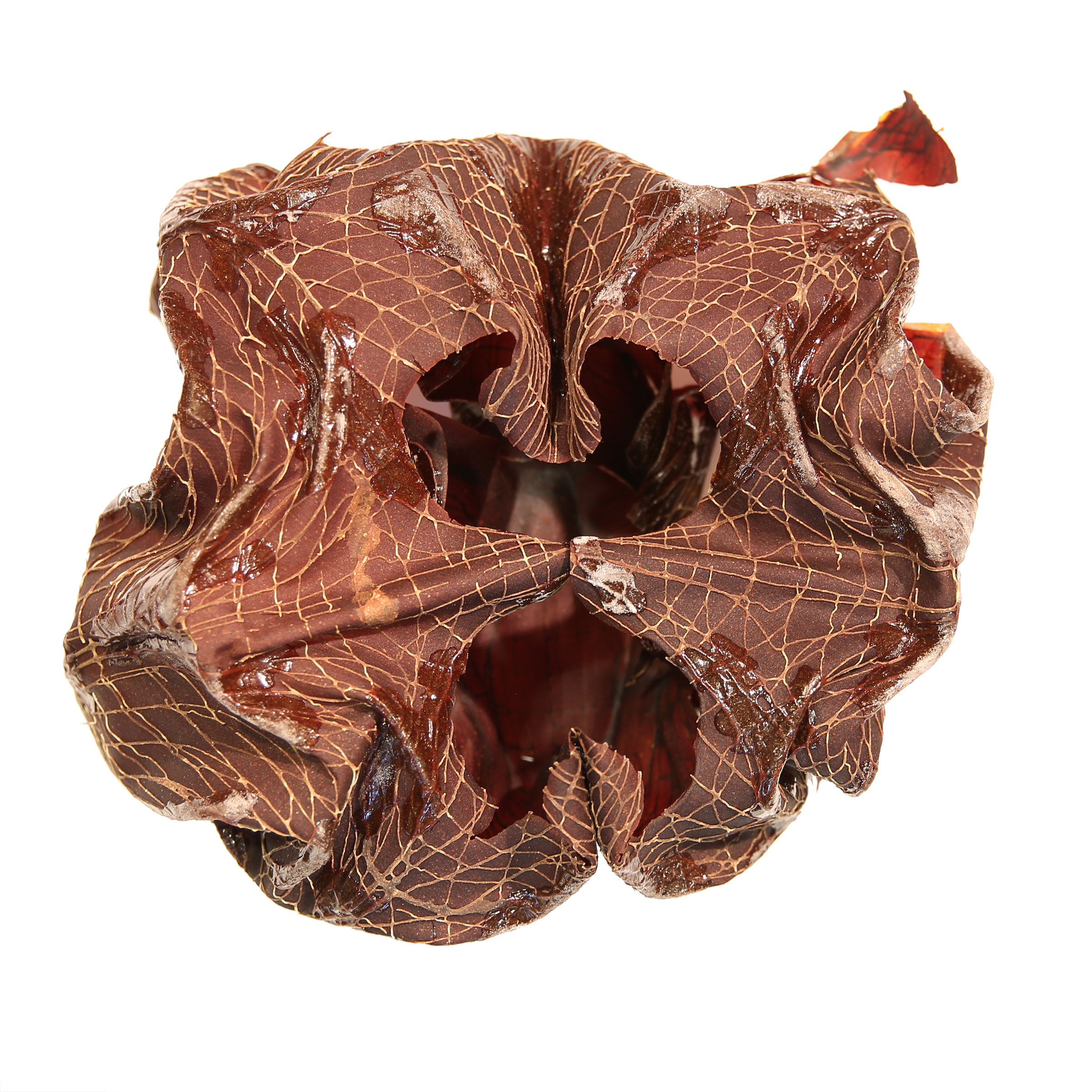
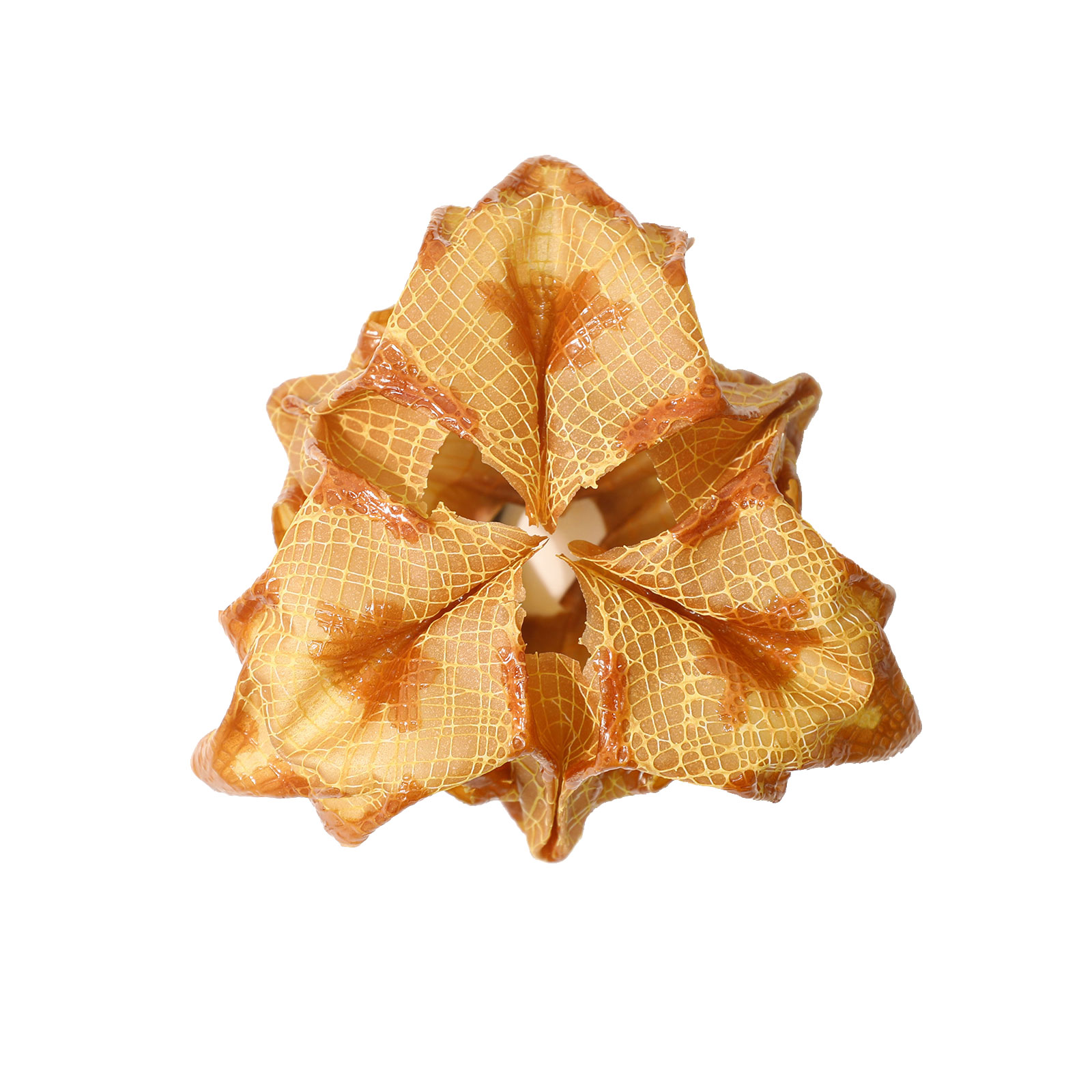
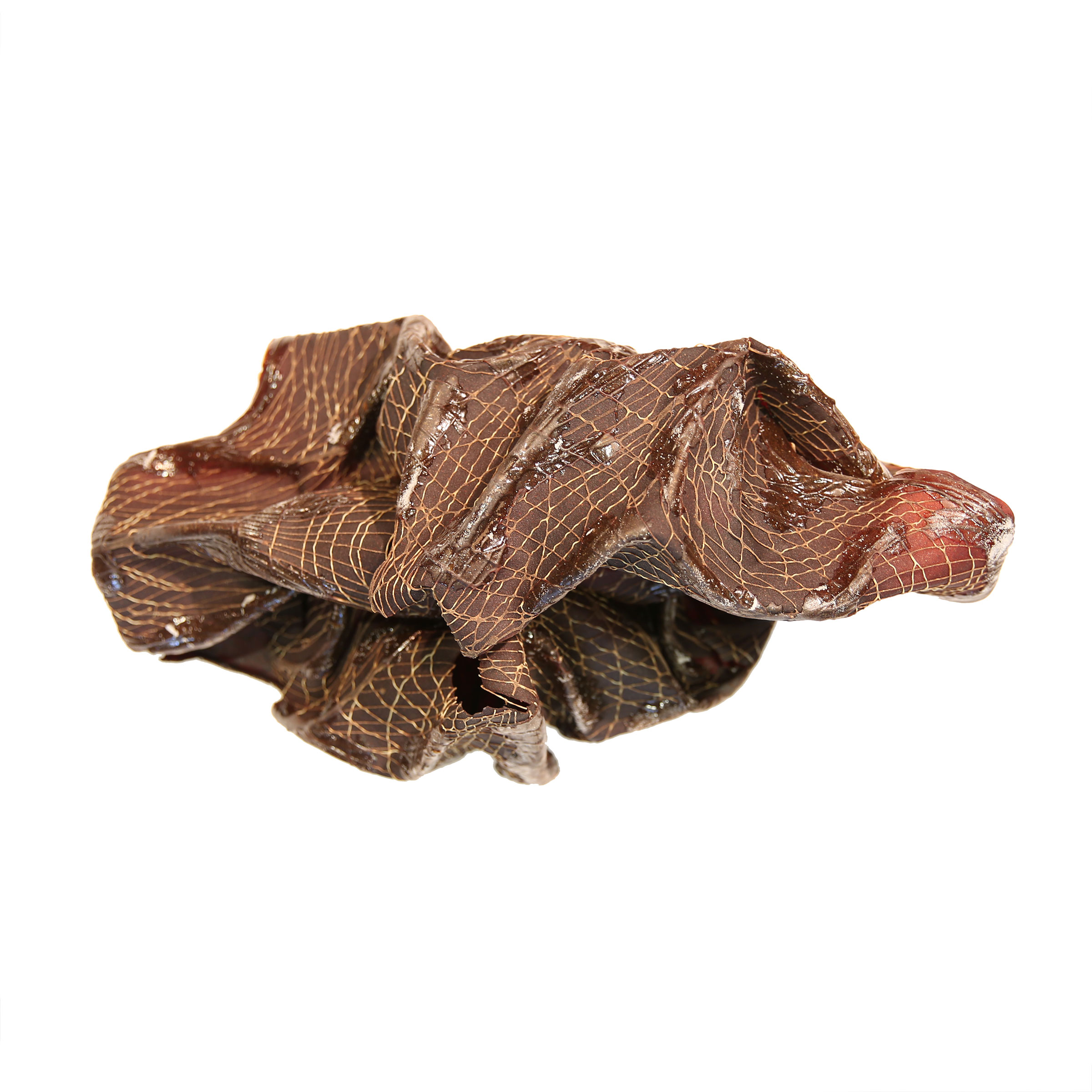
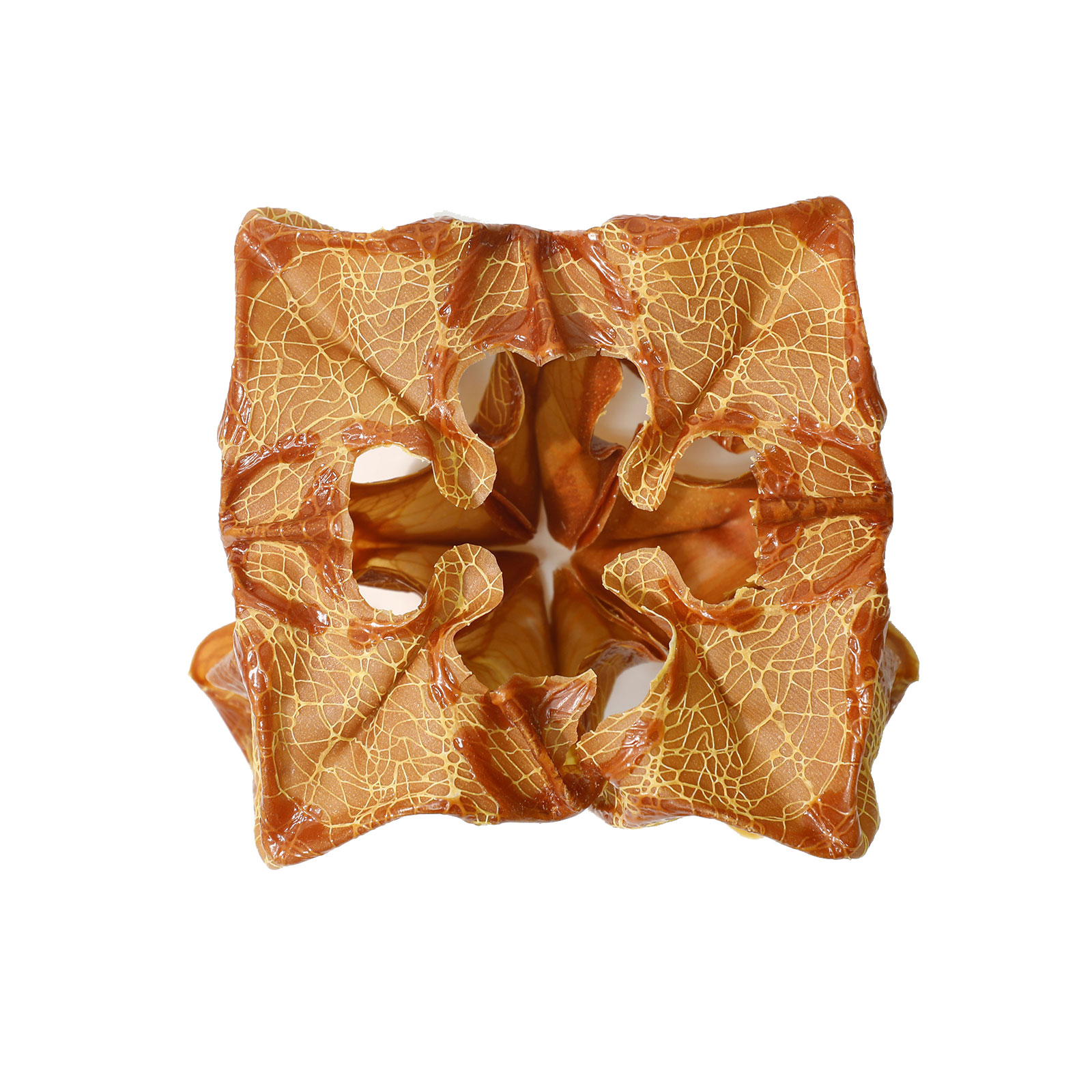
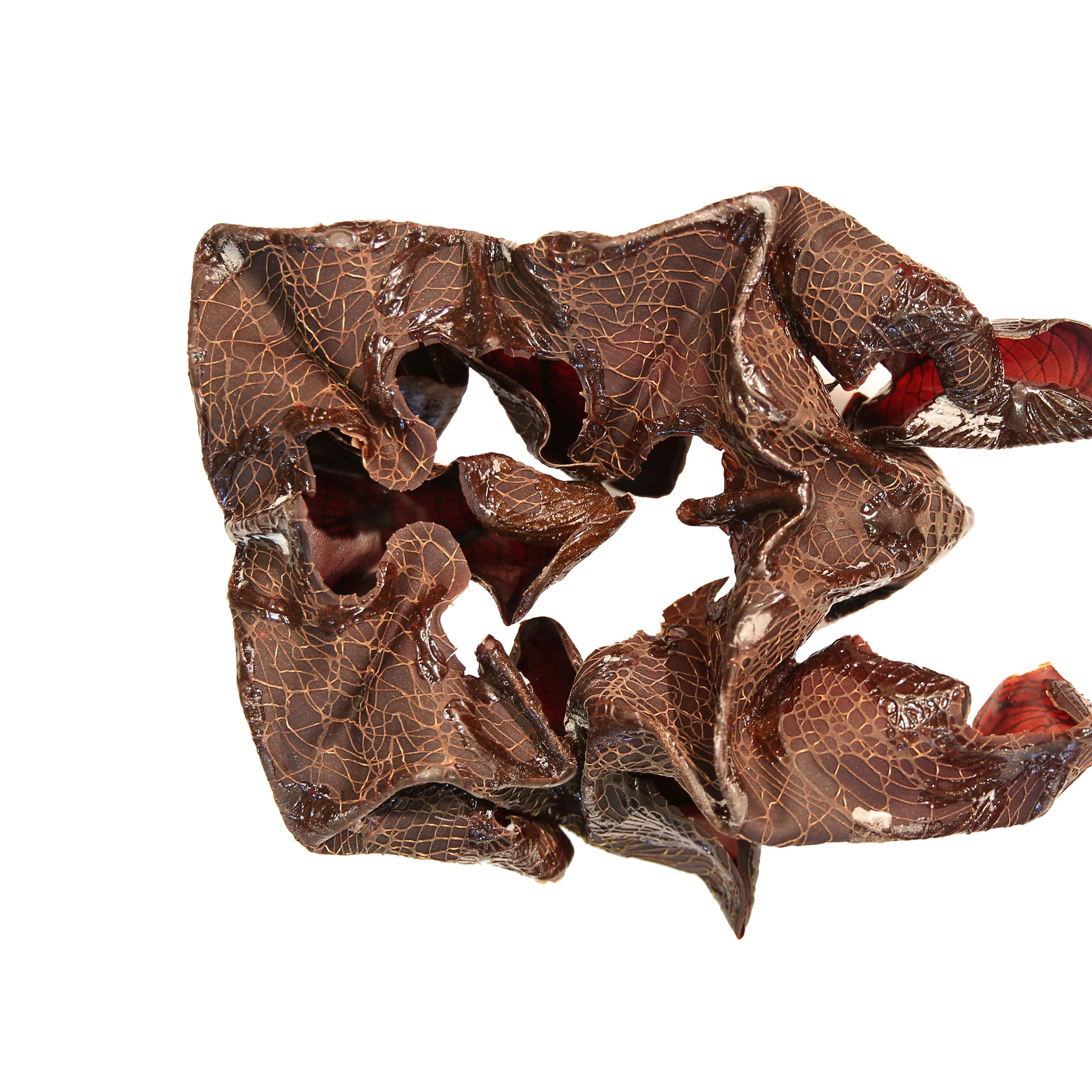
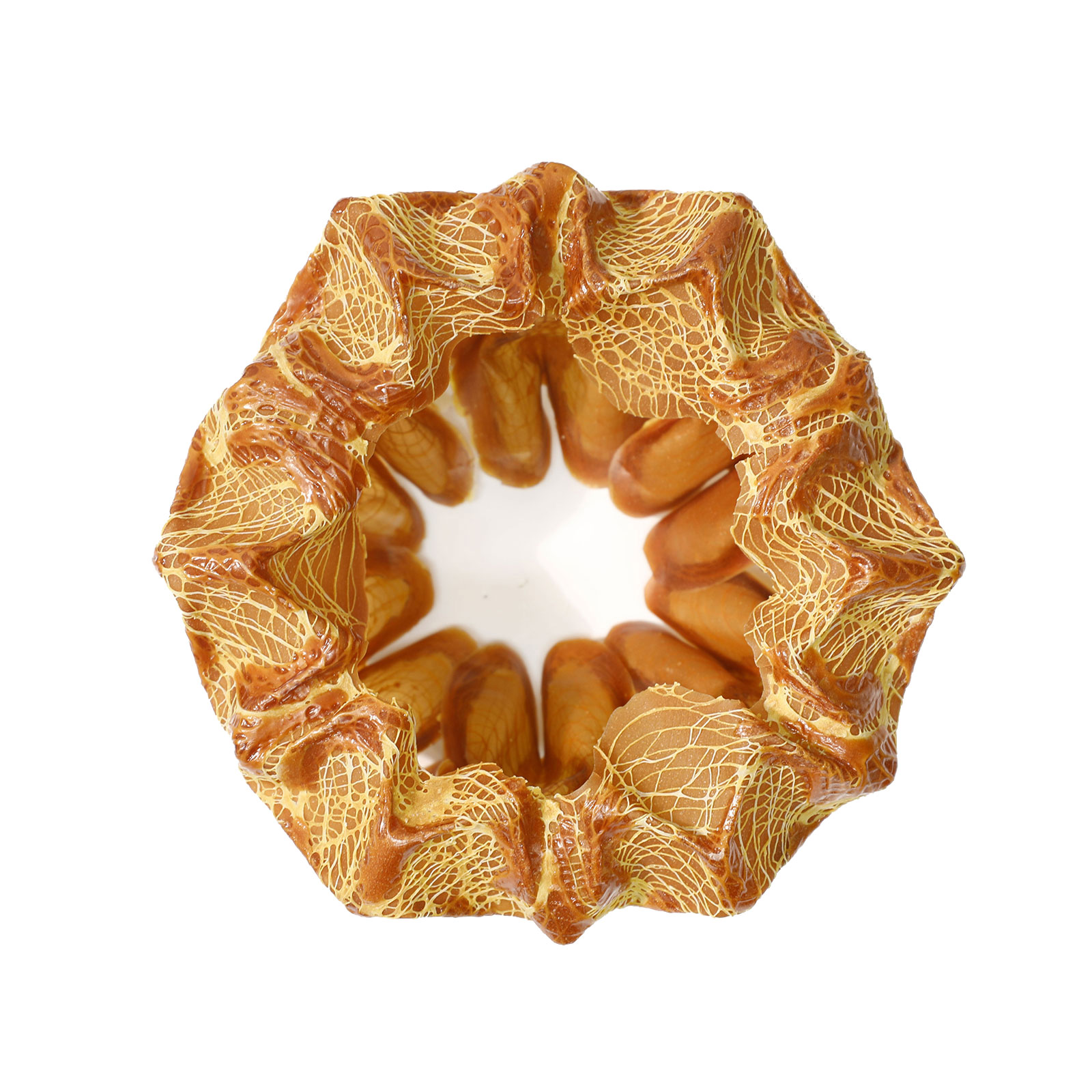

Figure I: Plan view comparison of the deformation and color change of + crease prints aged over 1 year with 4 different 2-dimensional geometries and 3-dimensional forms.

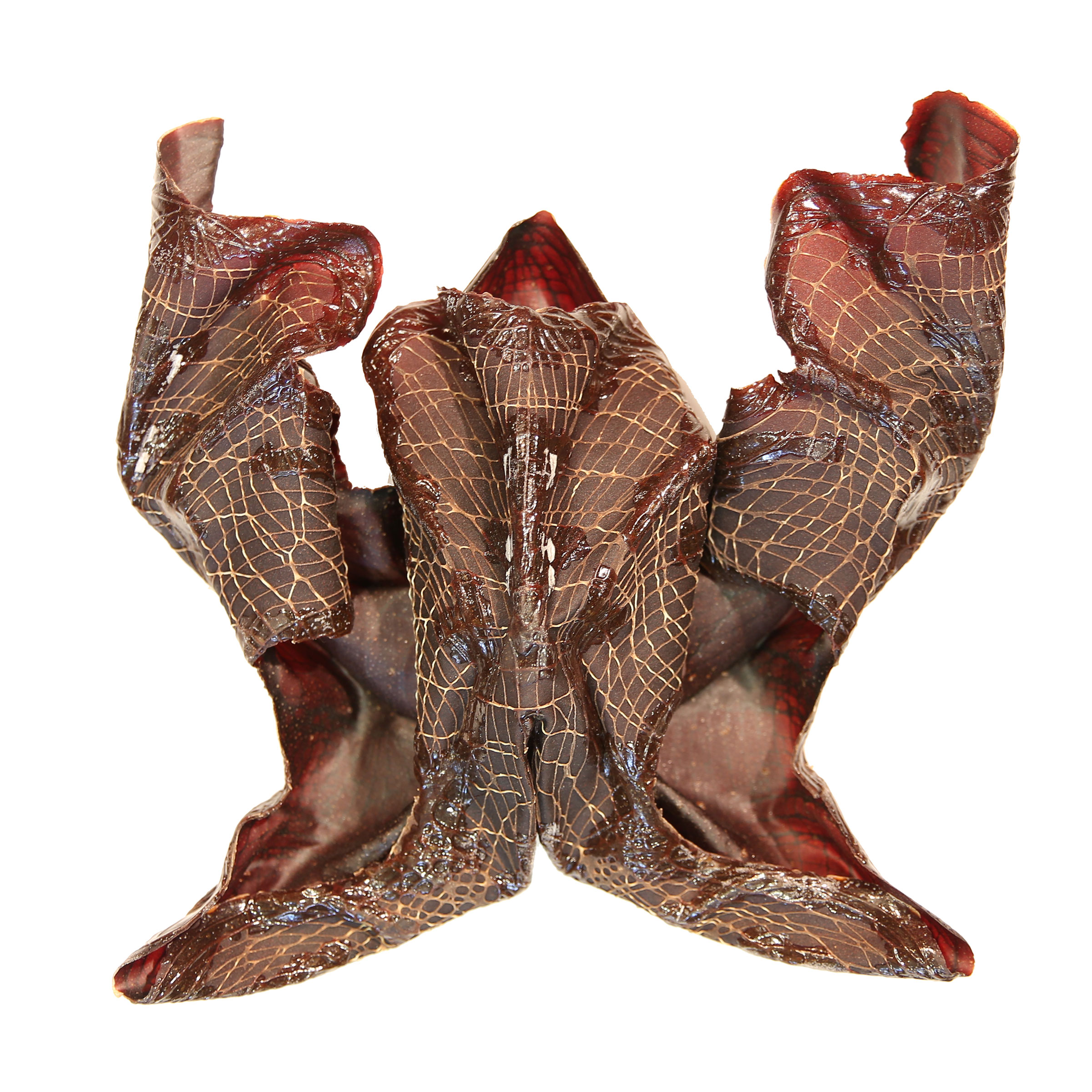

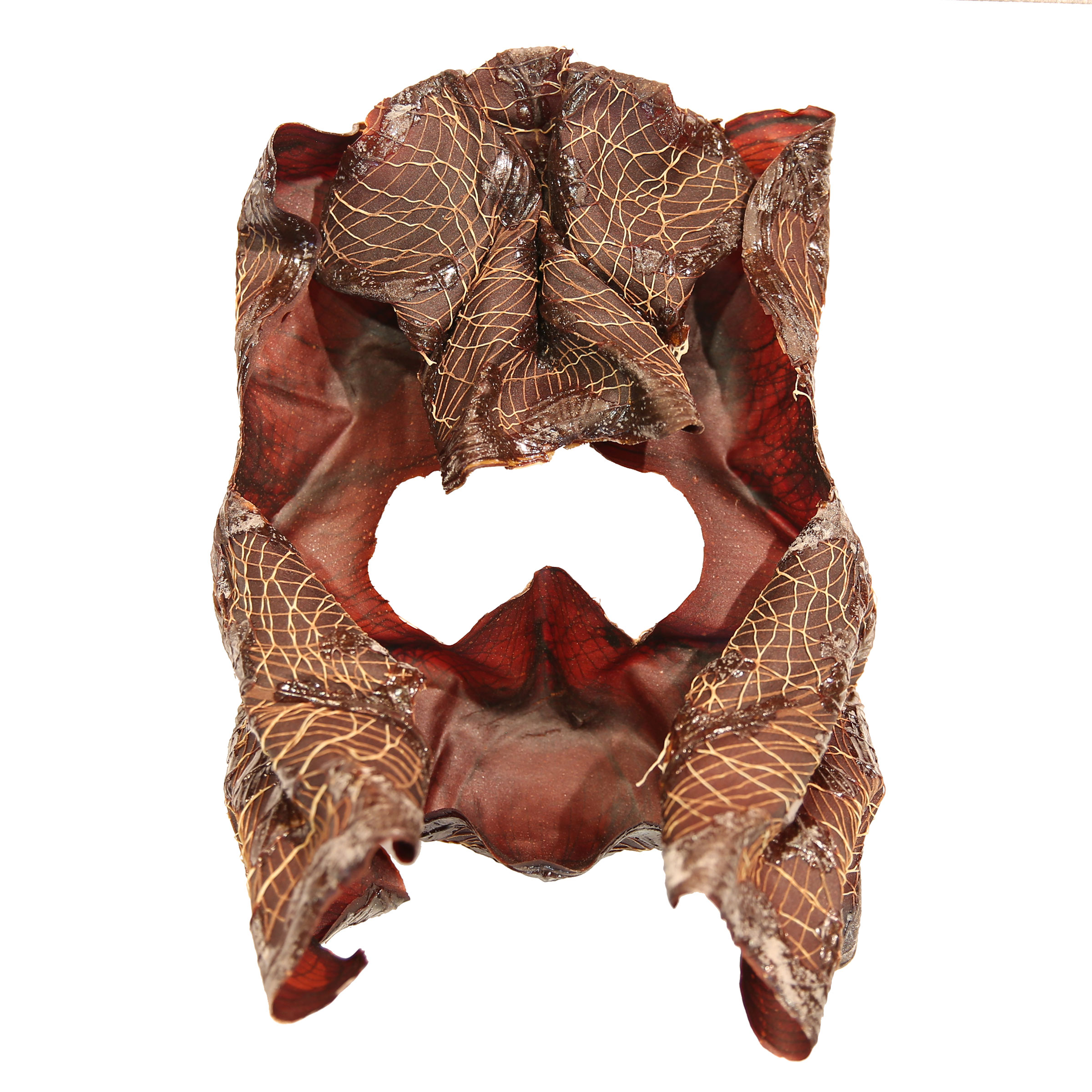


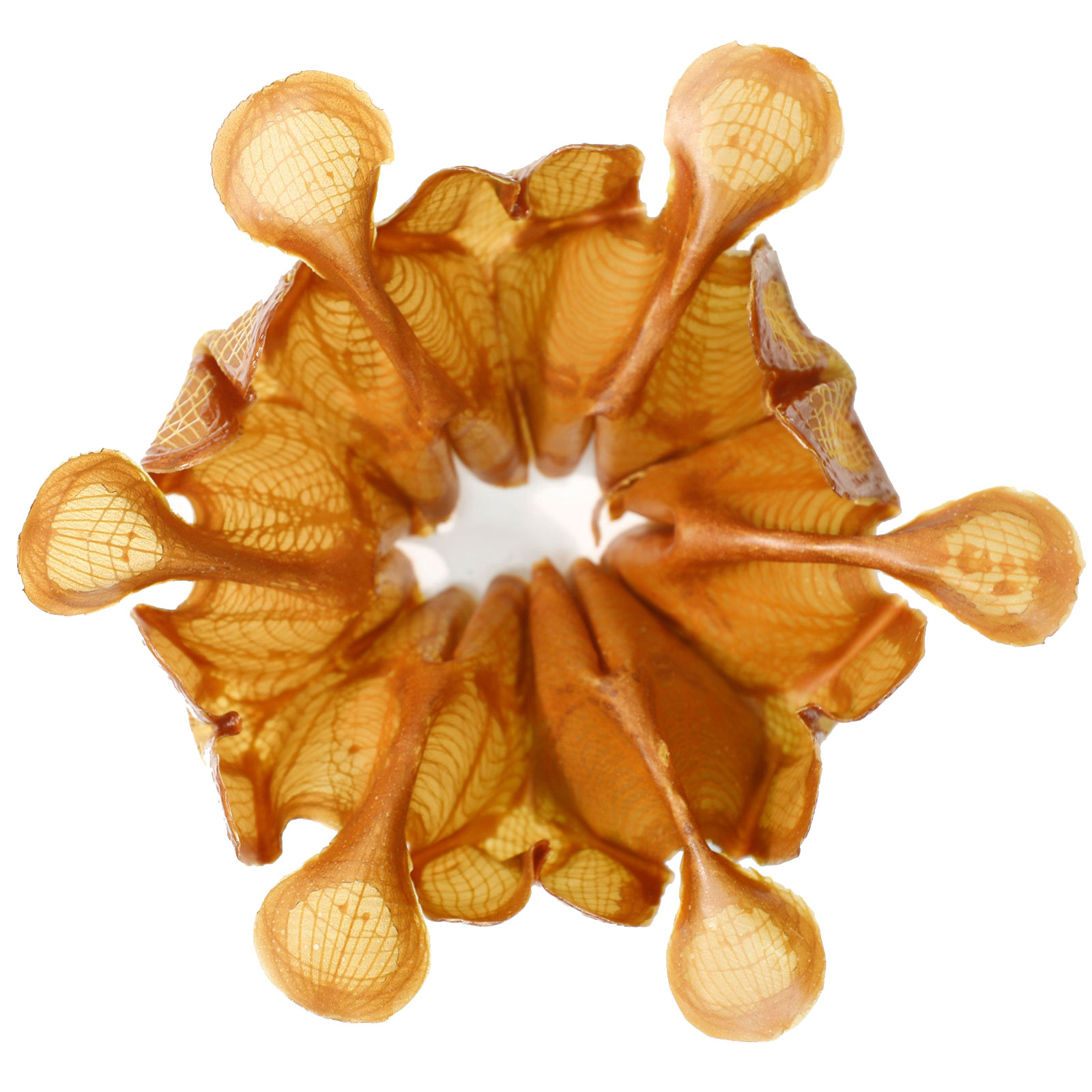
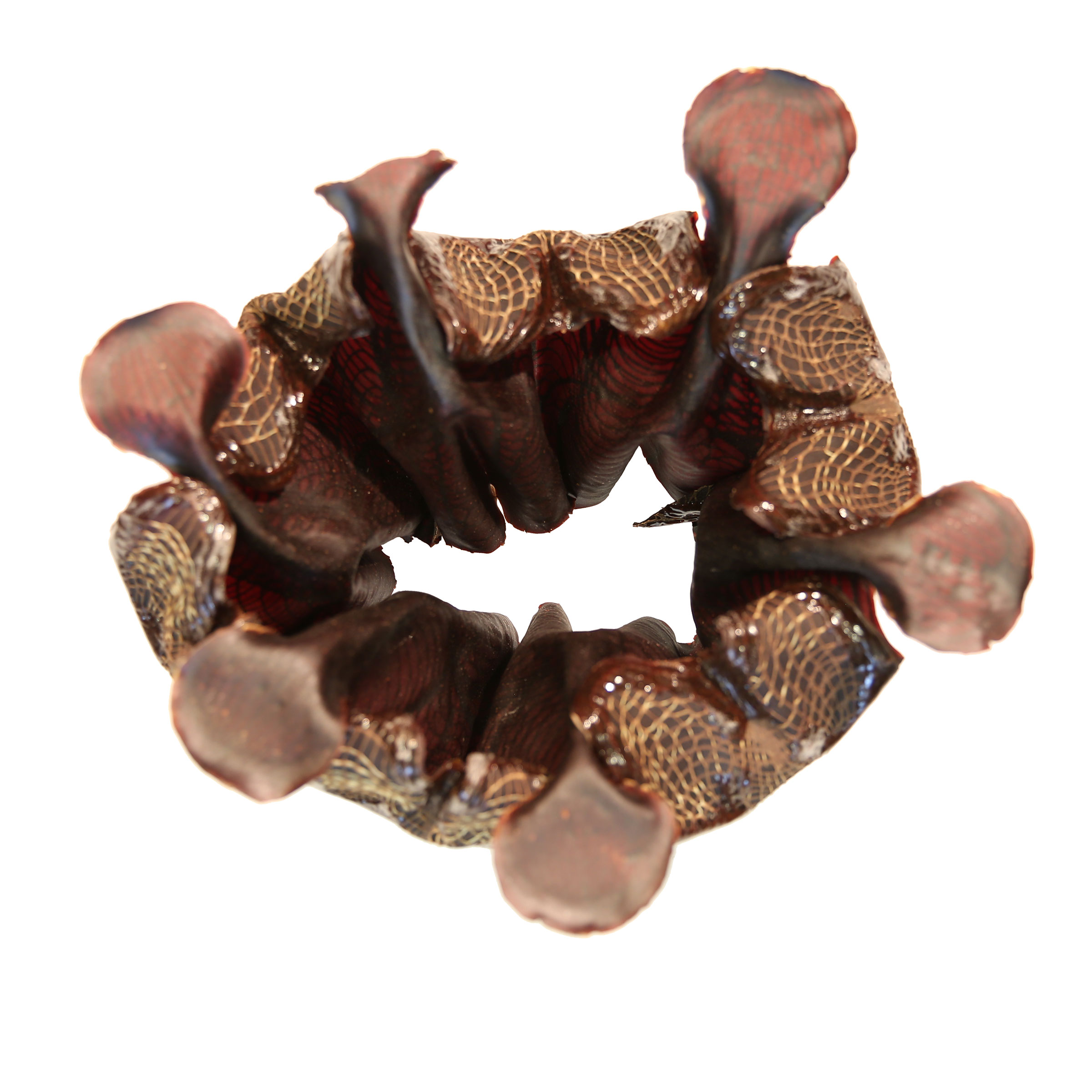
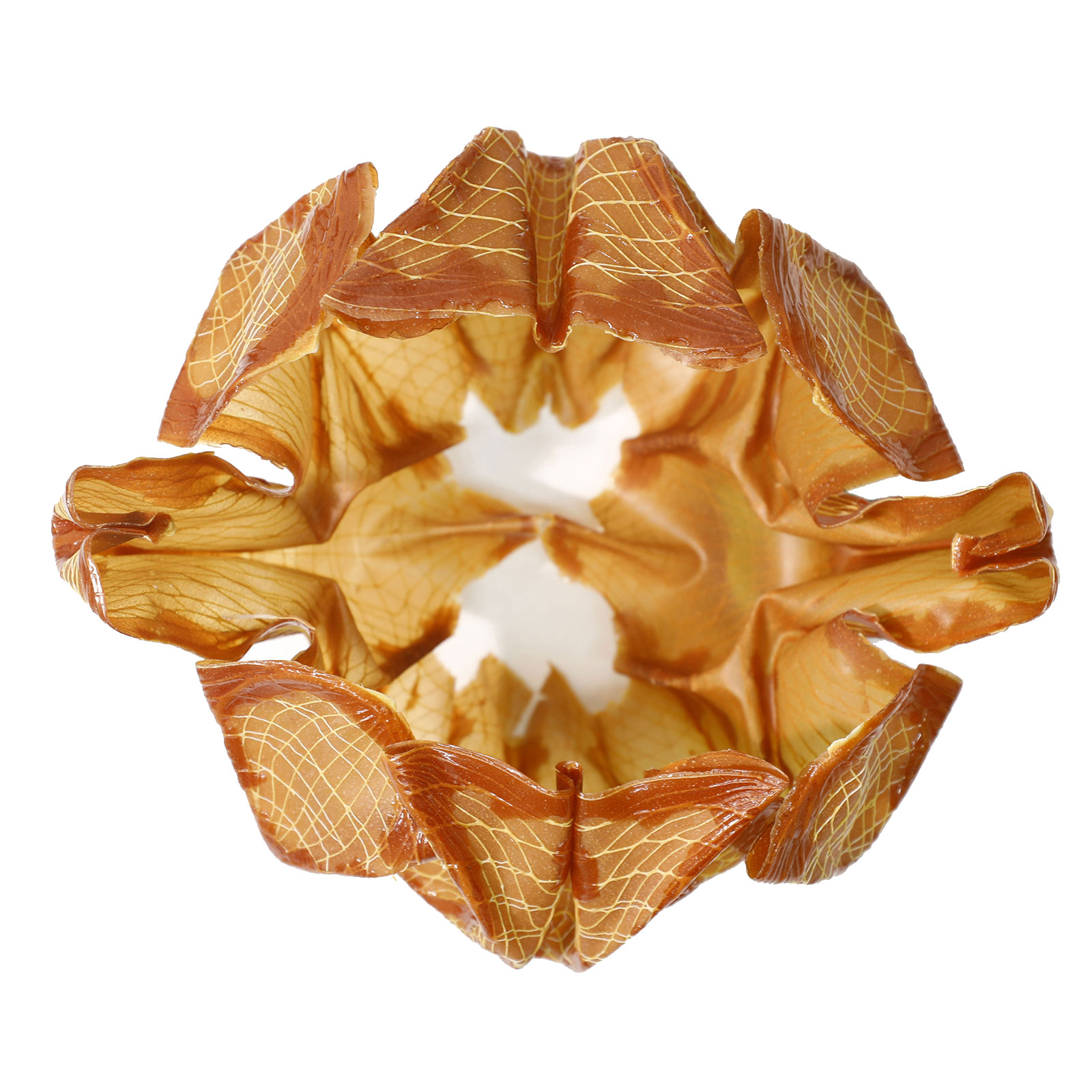

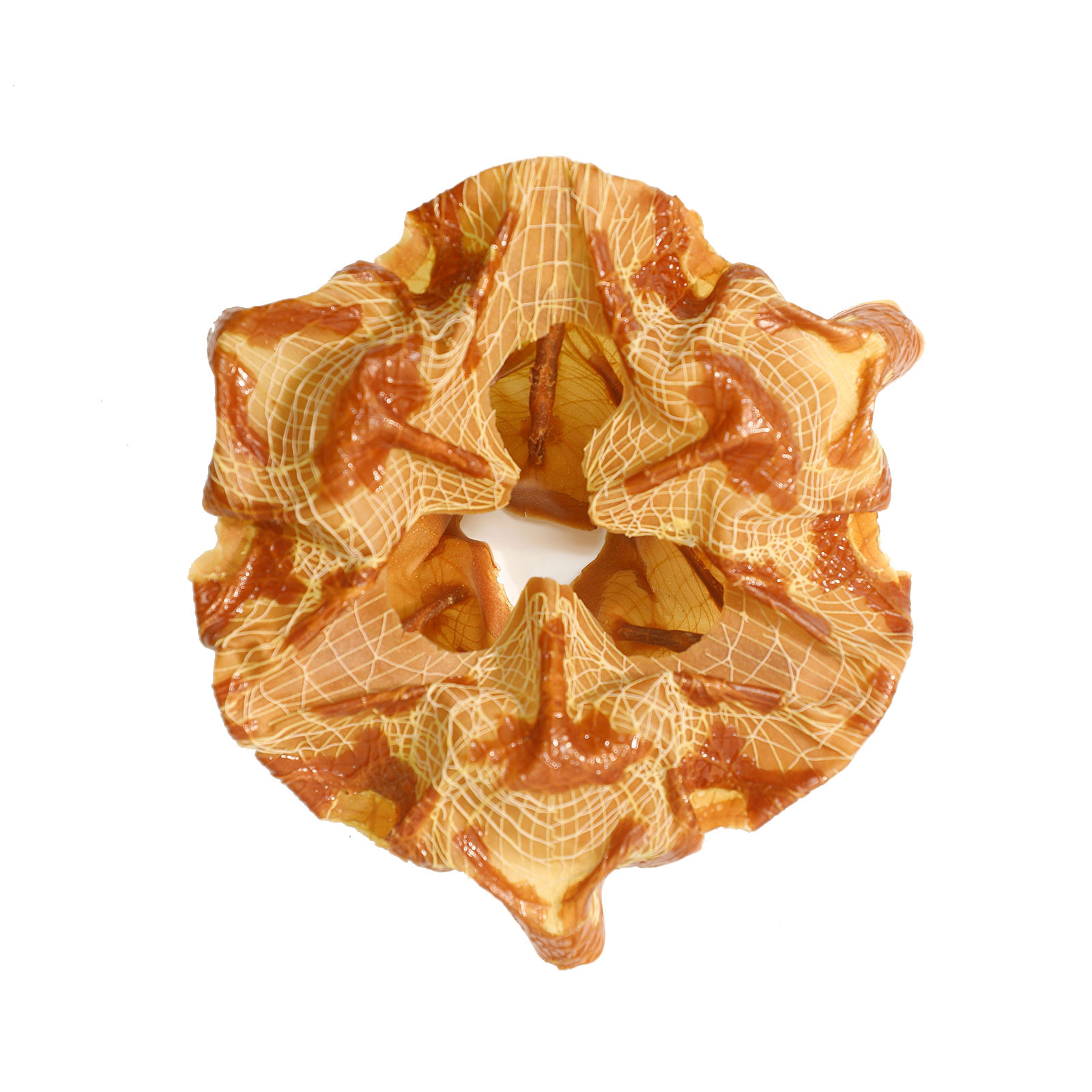
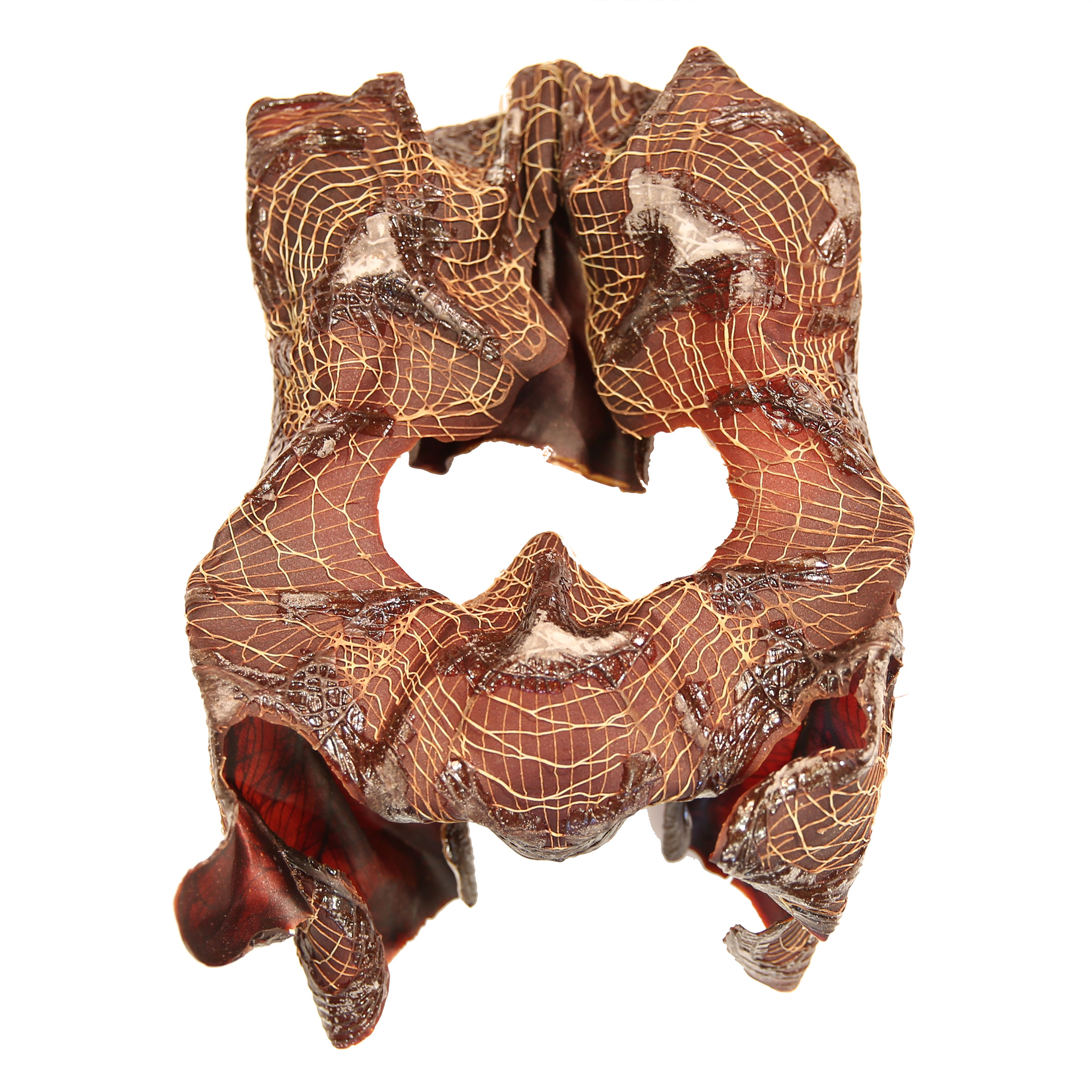

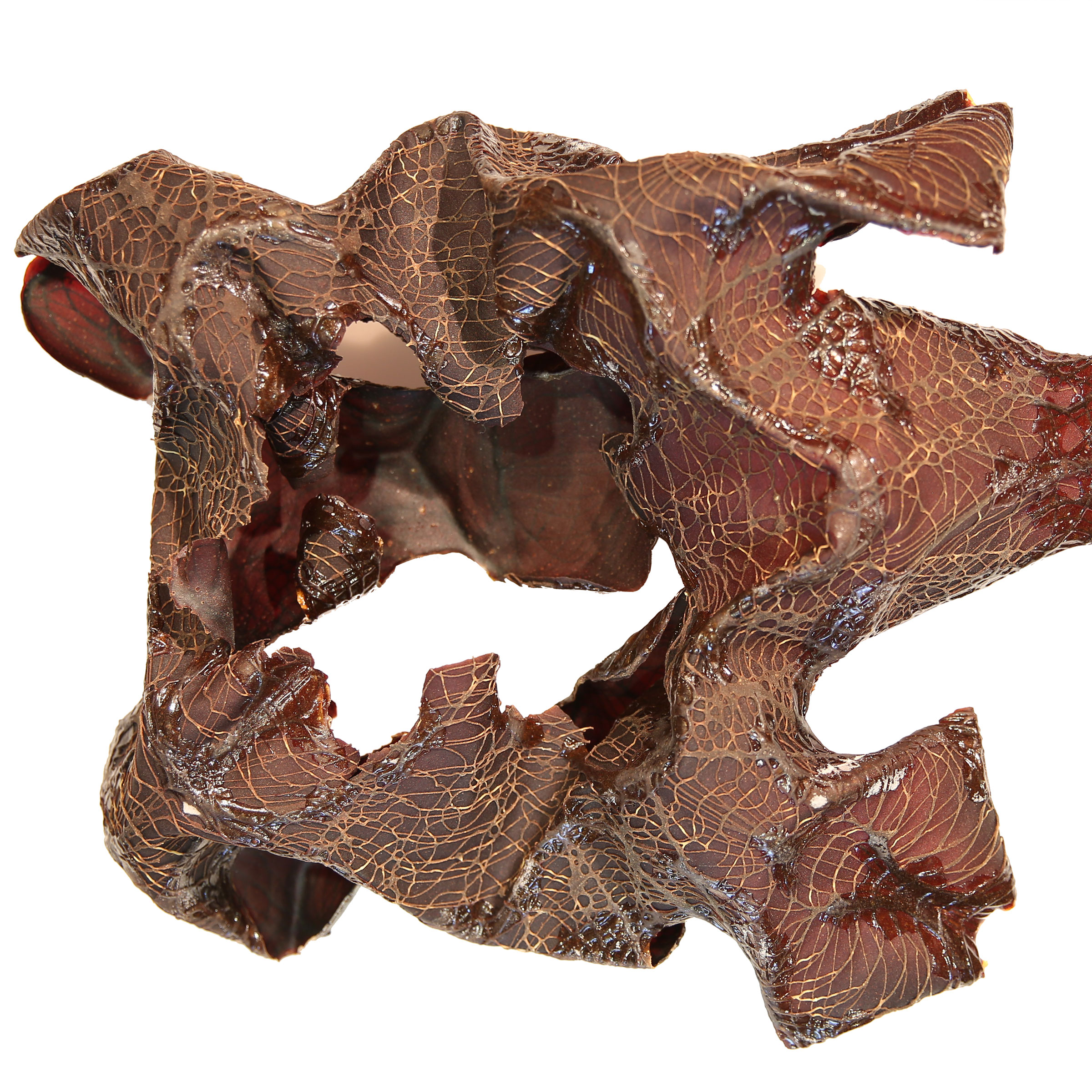


Figure II: Plan view comparison of the deformation and color change of + crease prints aged over 1 year with 4 different 2-dimensional geometries and 3-dimensional forms.





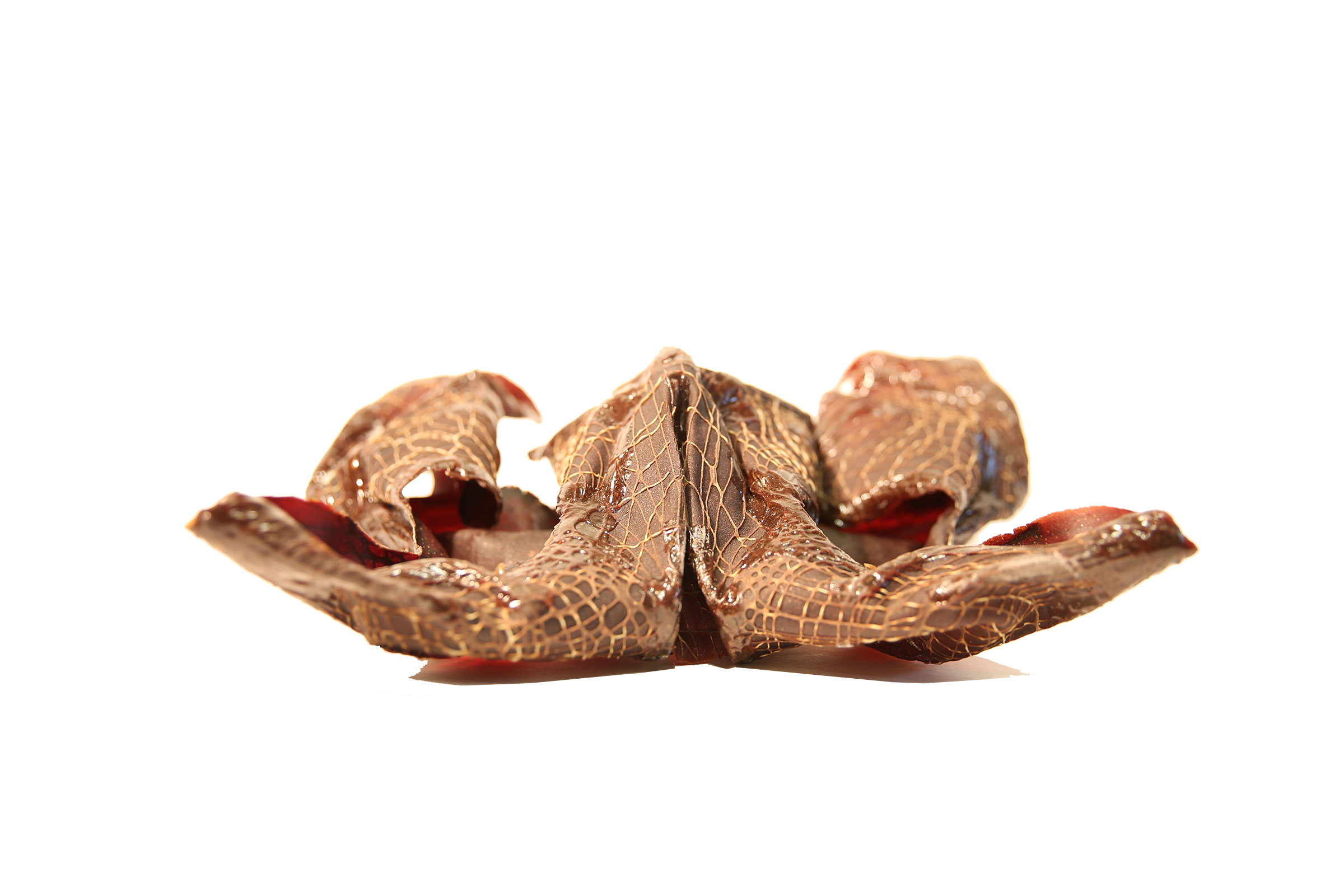

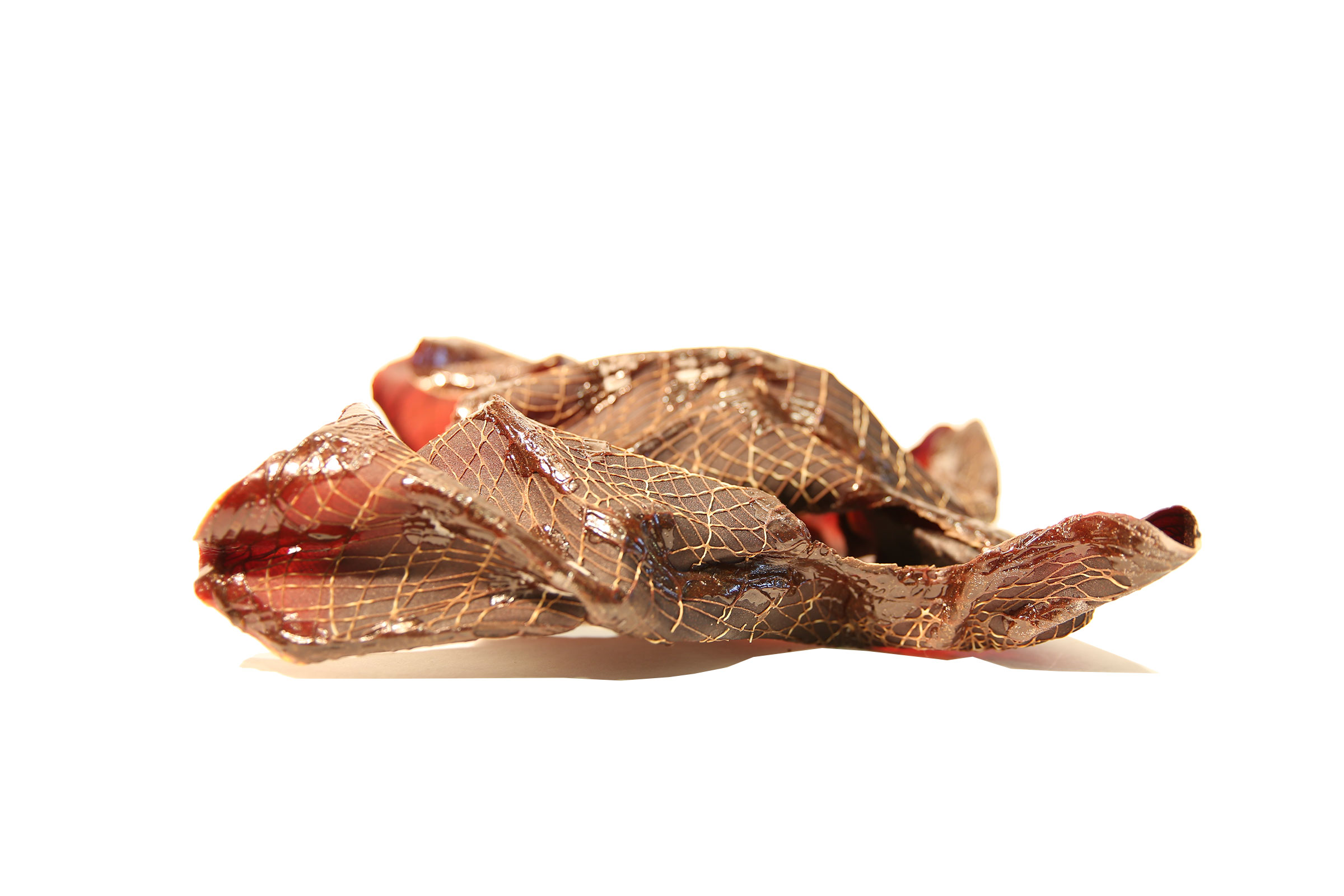
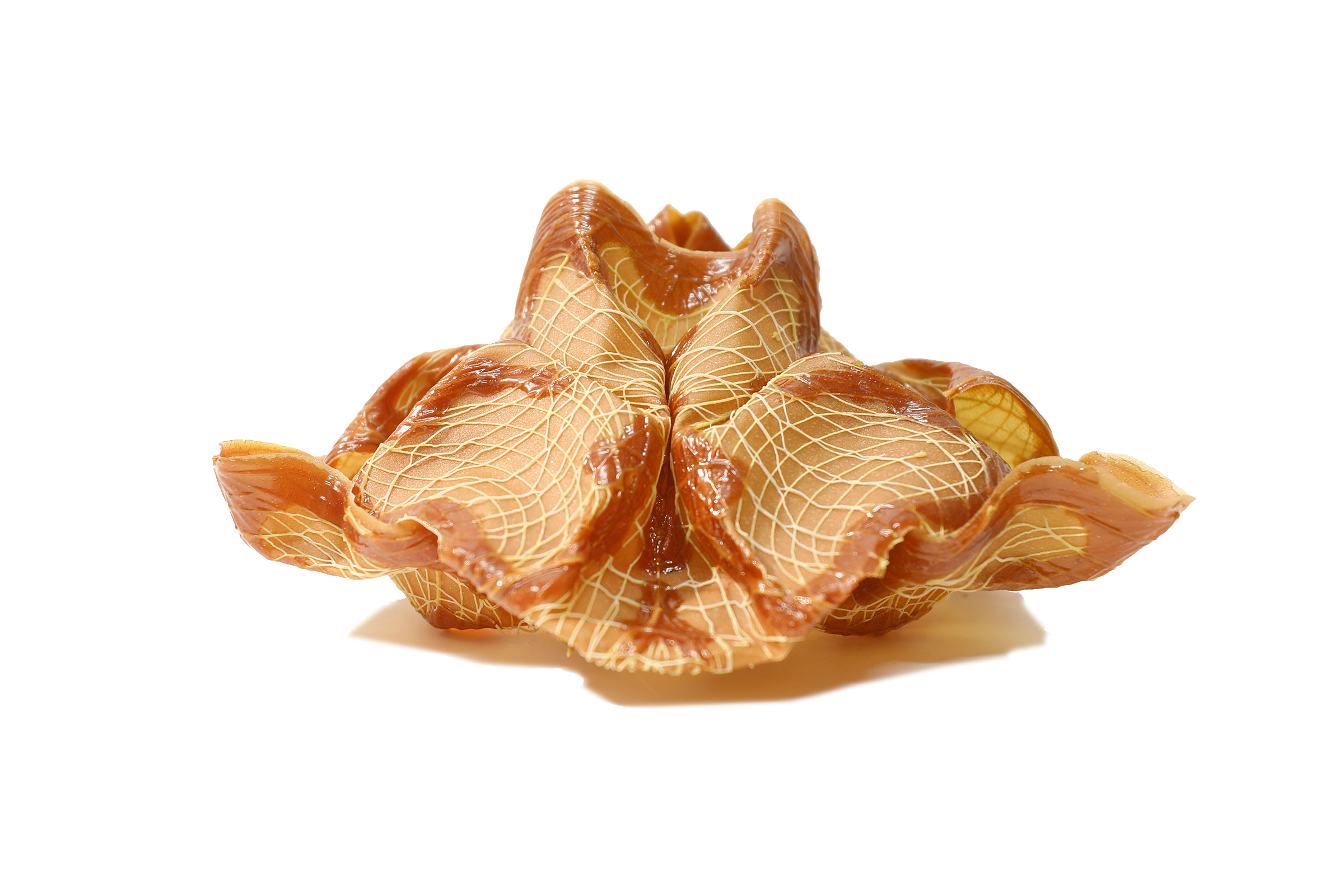





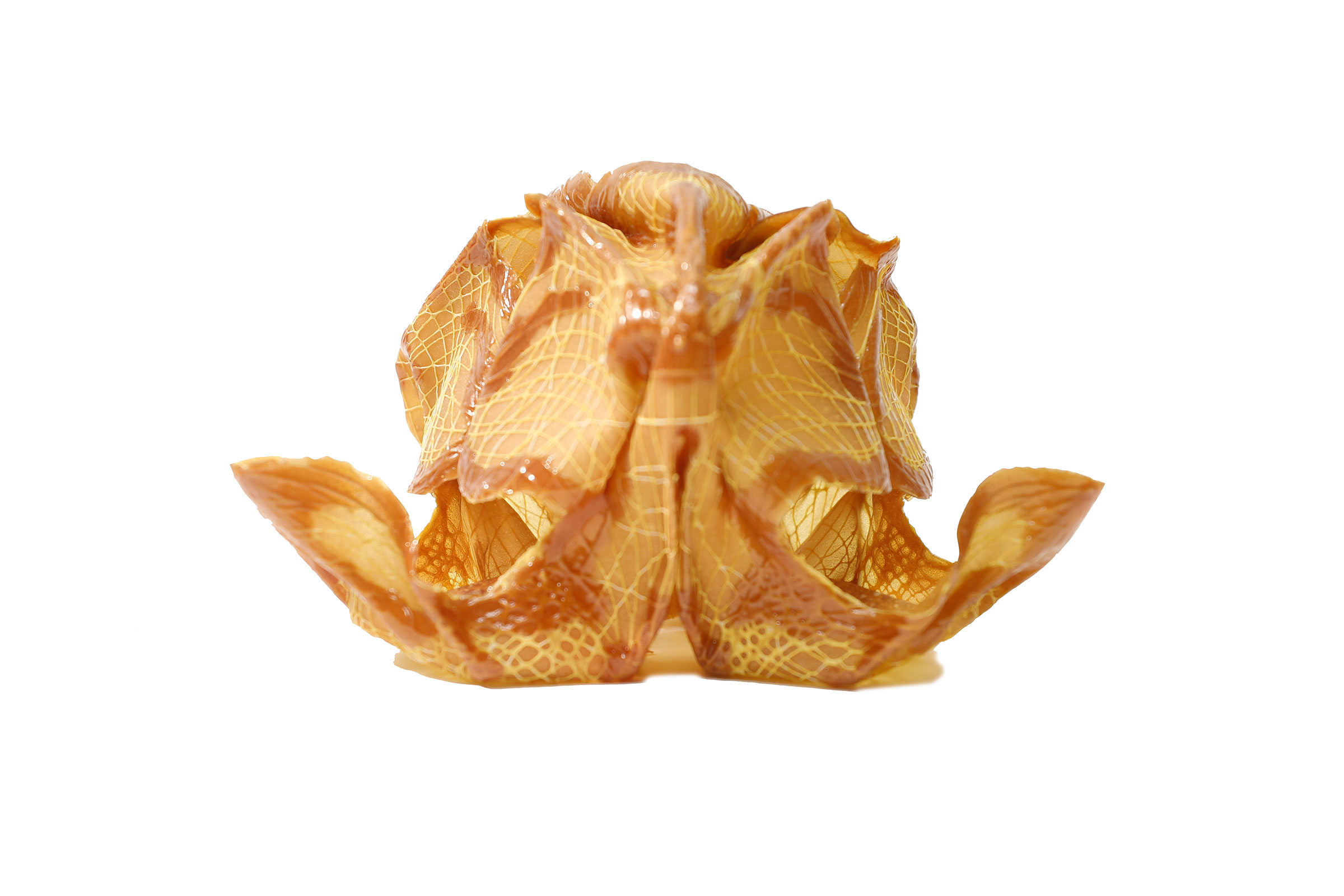
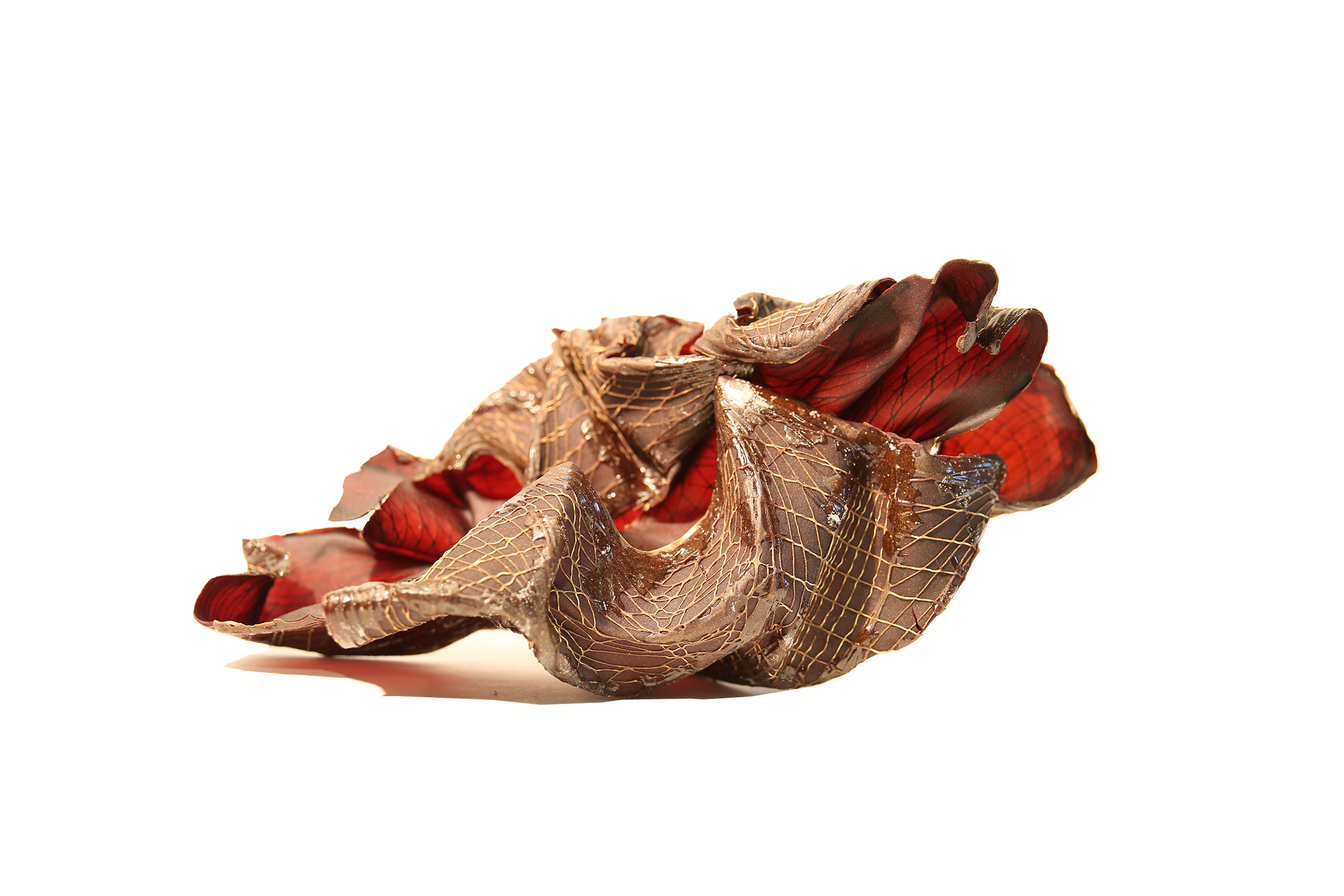

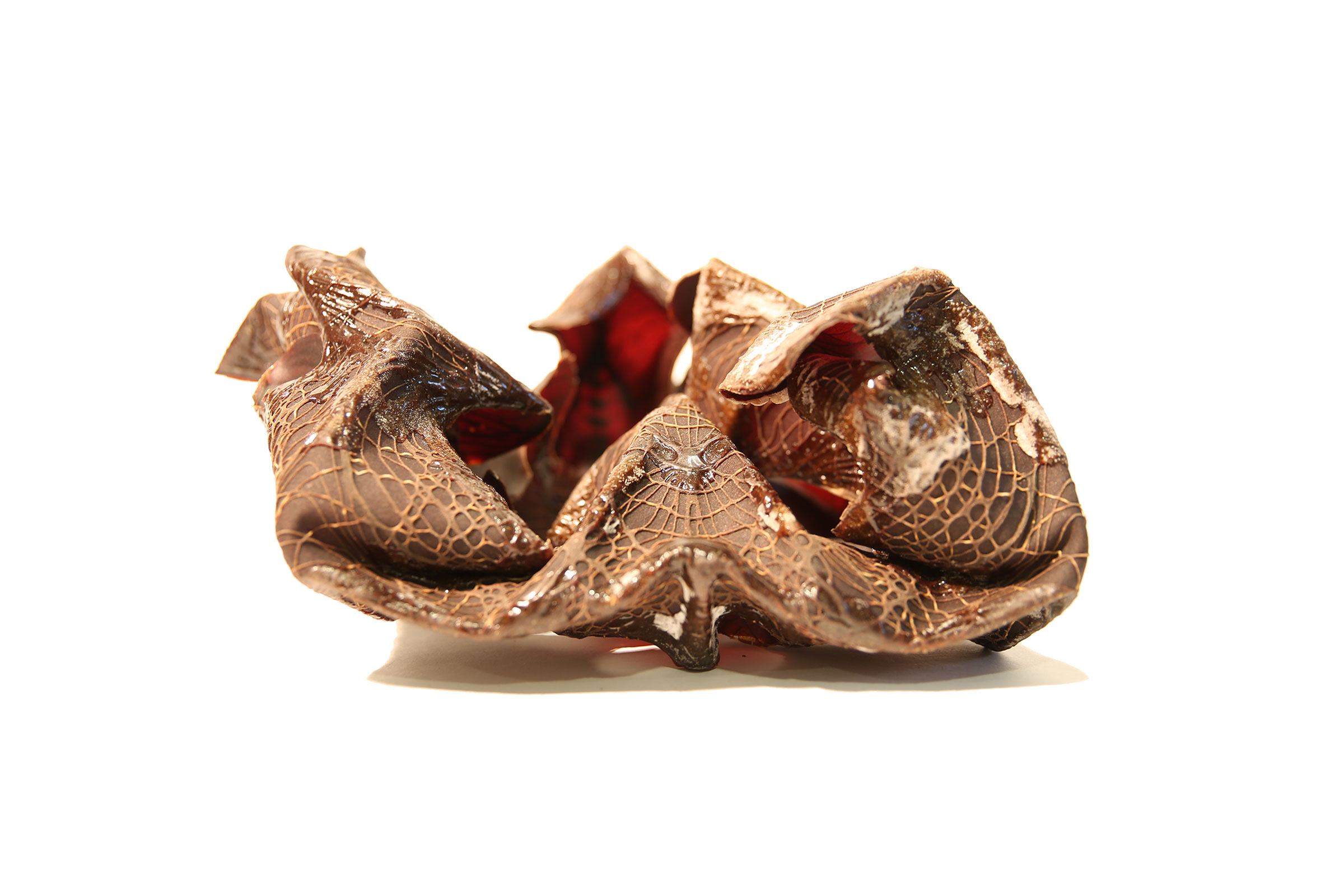
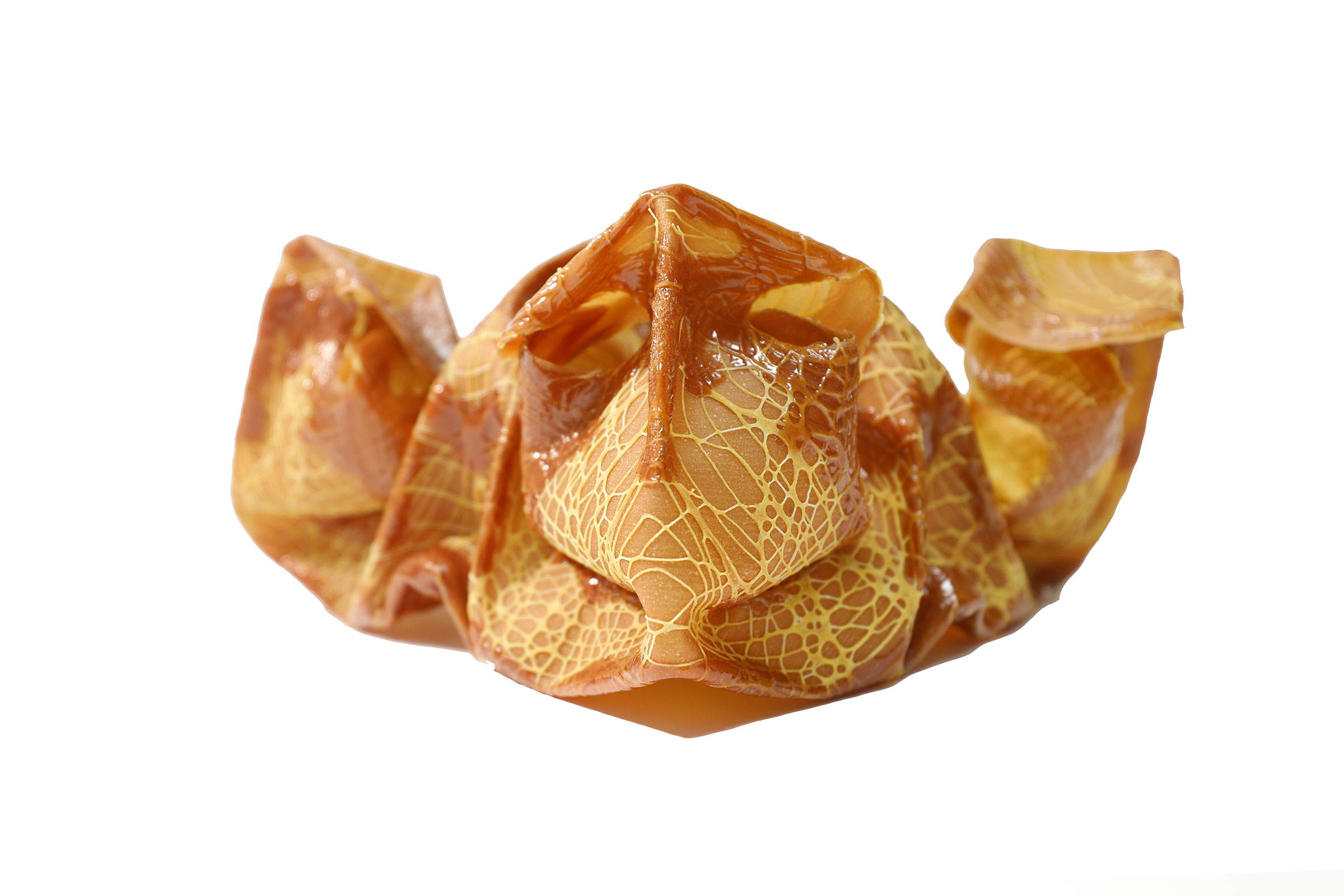
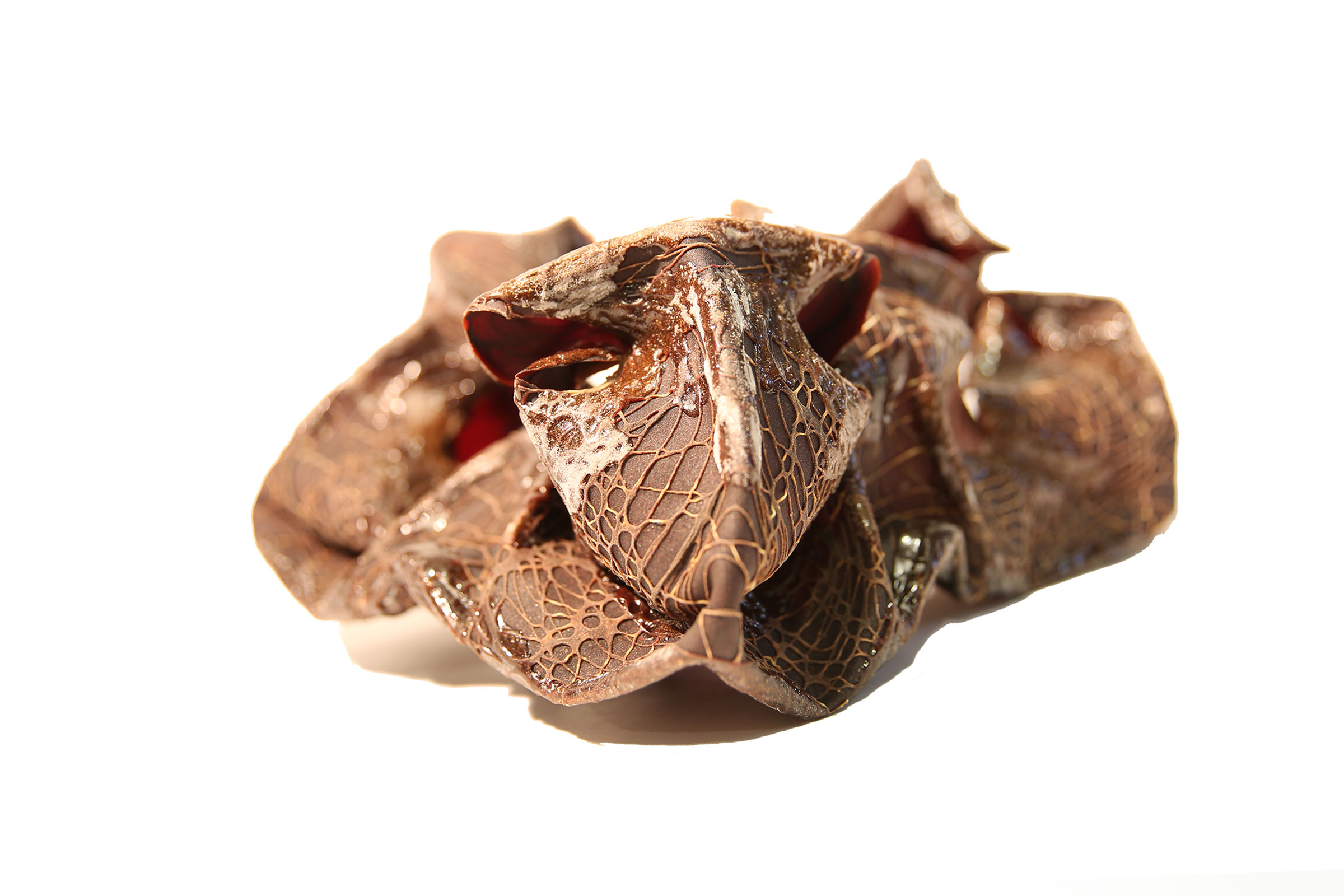


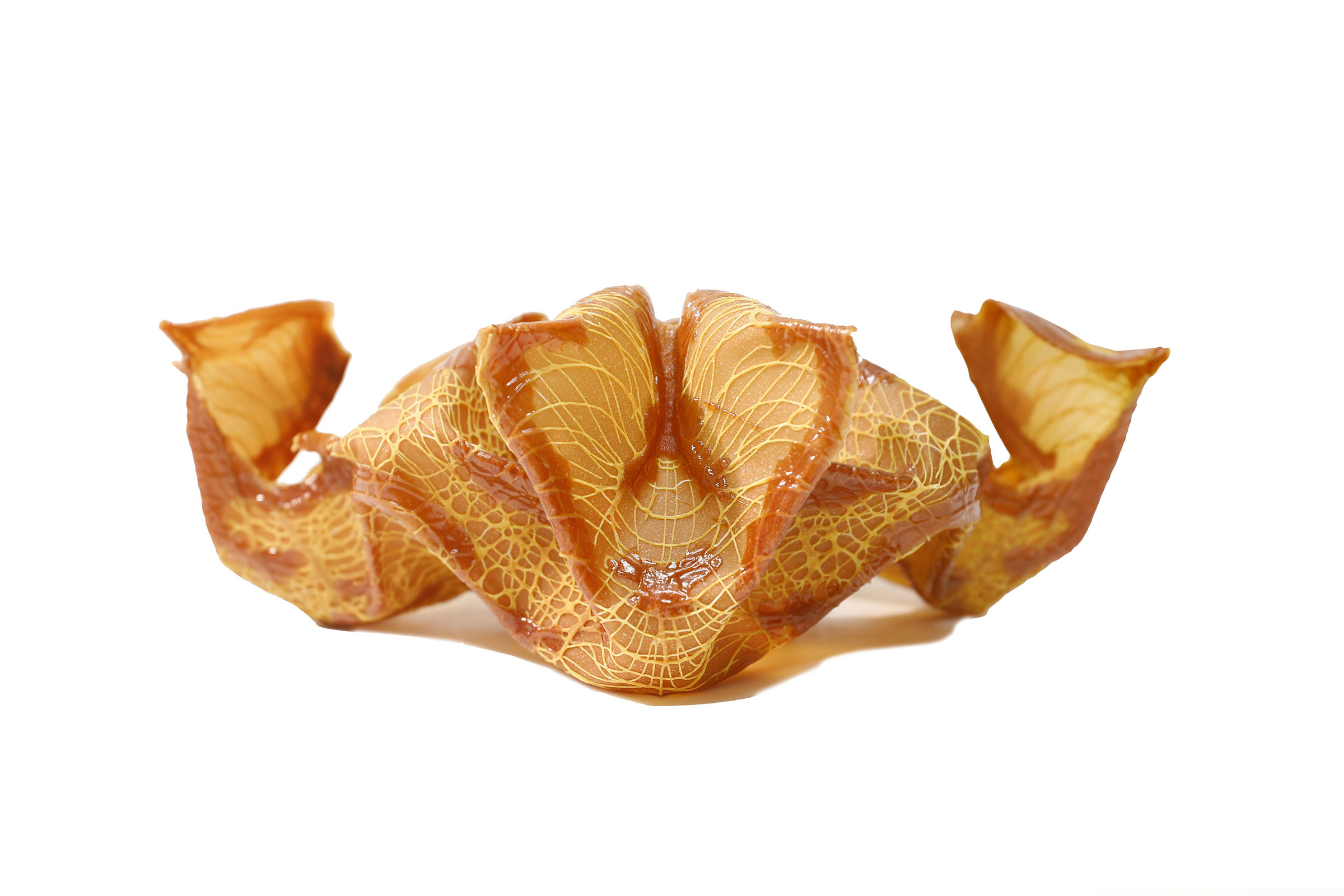
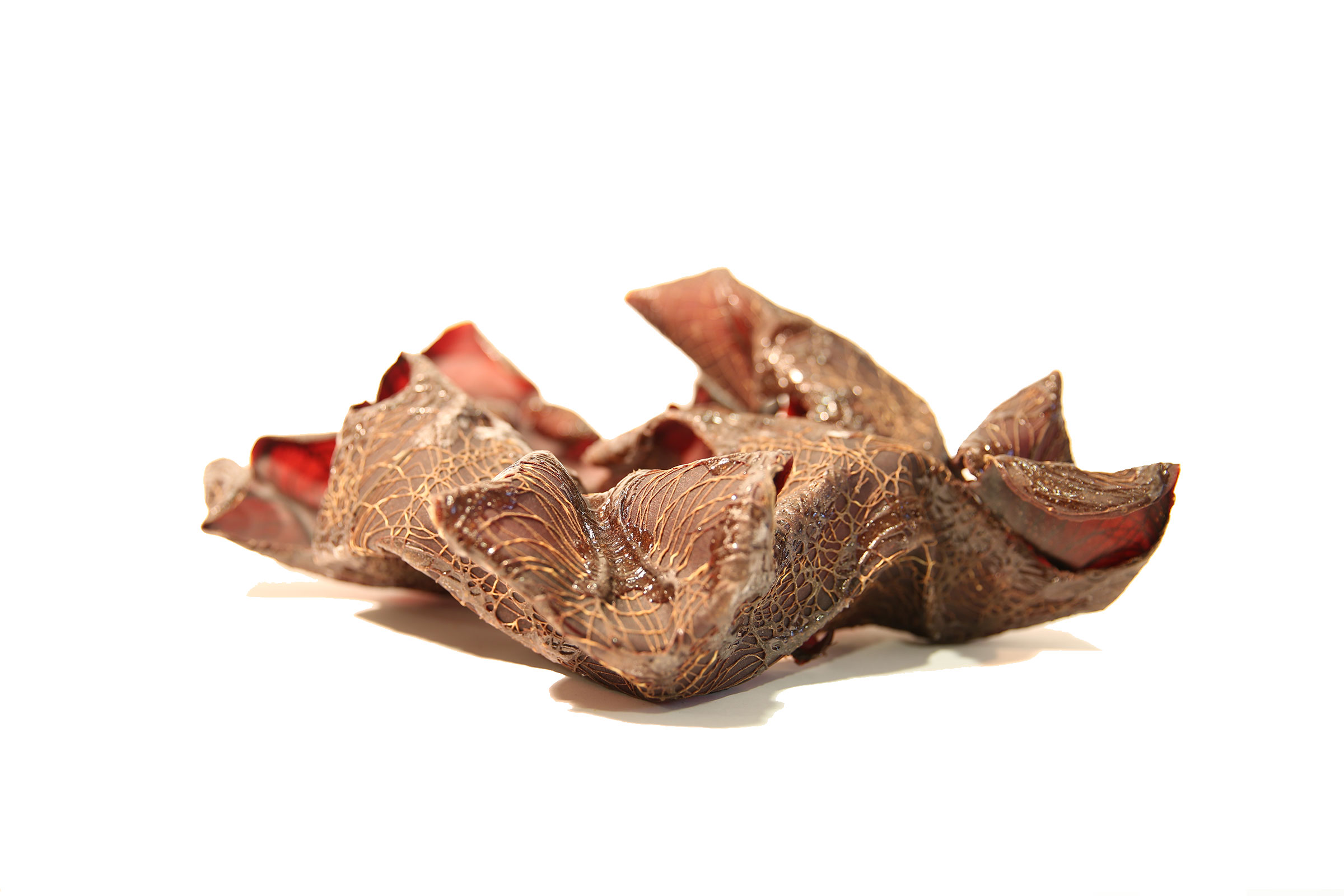
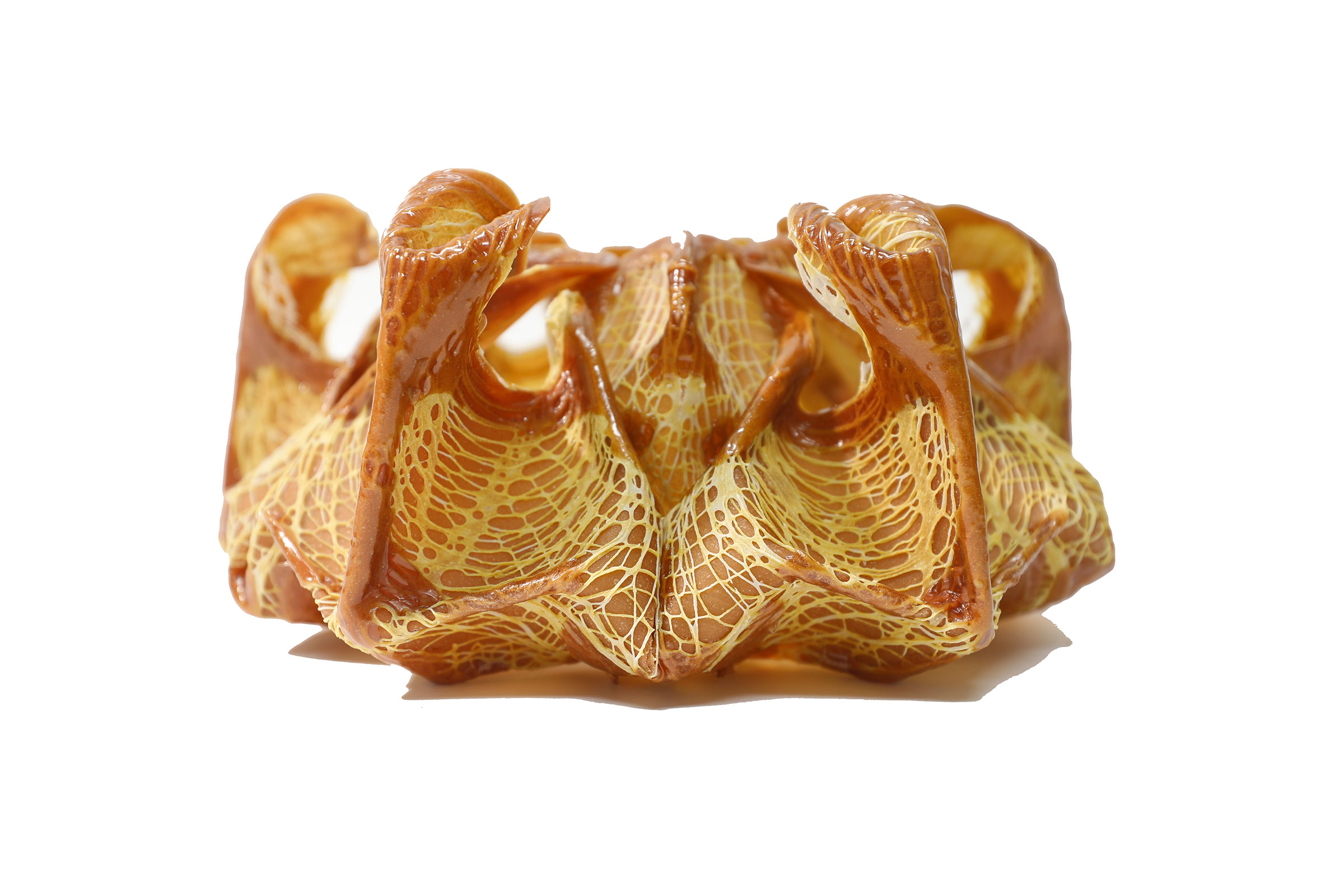



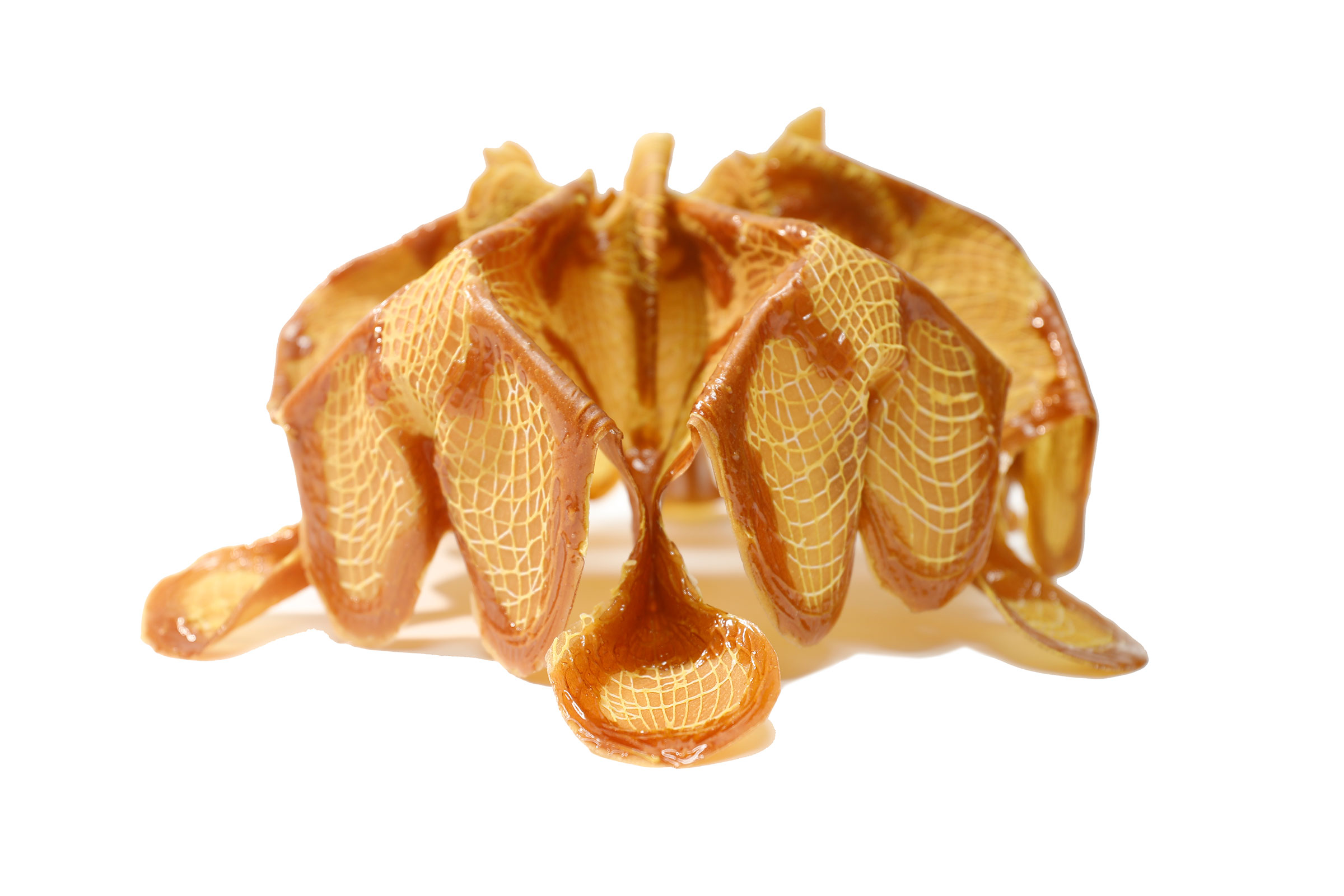
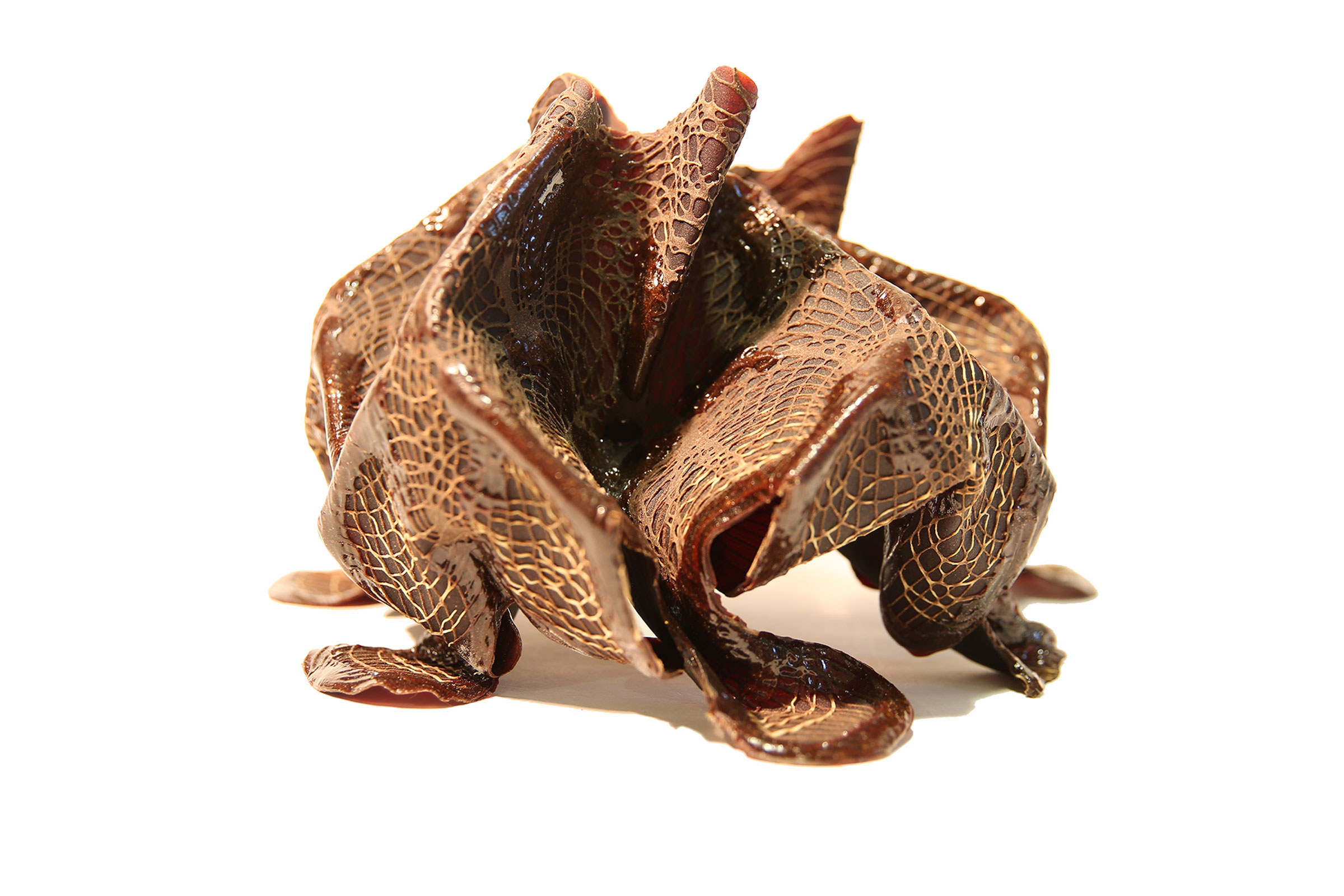

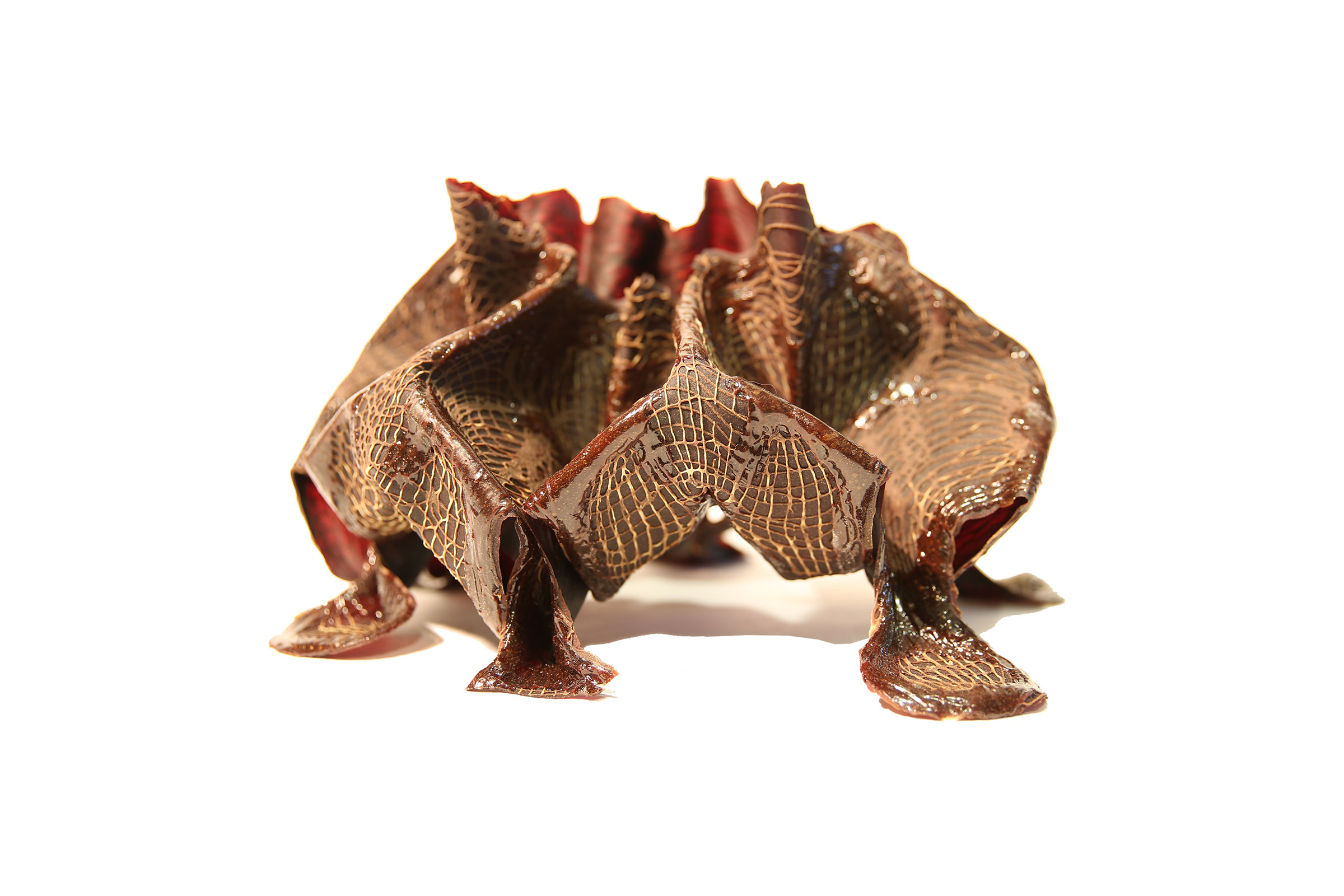
Figure III: Elevation view comparison of the deformation and color change of + crease prints aged over 1 year with 4 different 2-dimensional geometries and 3-dimensional forms.


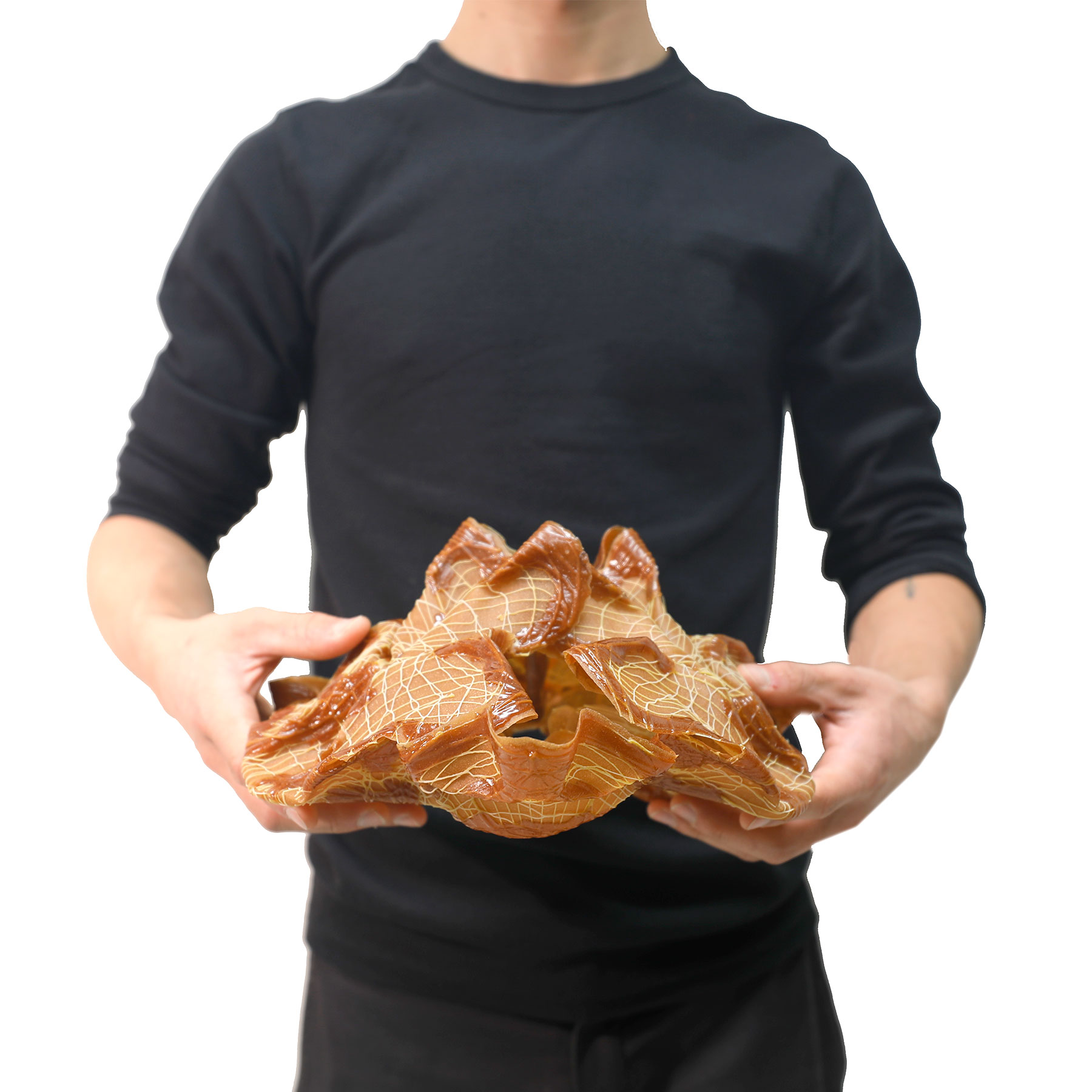




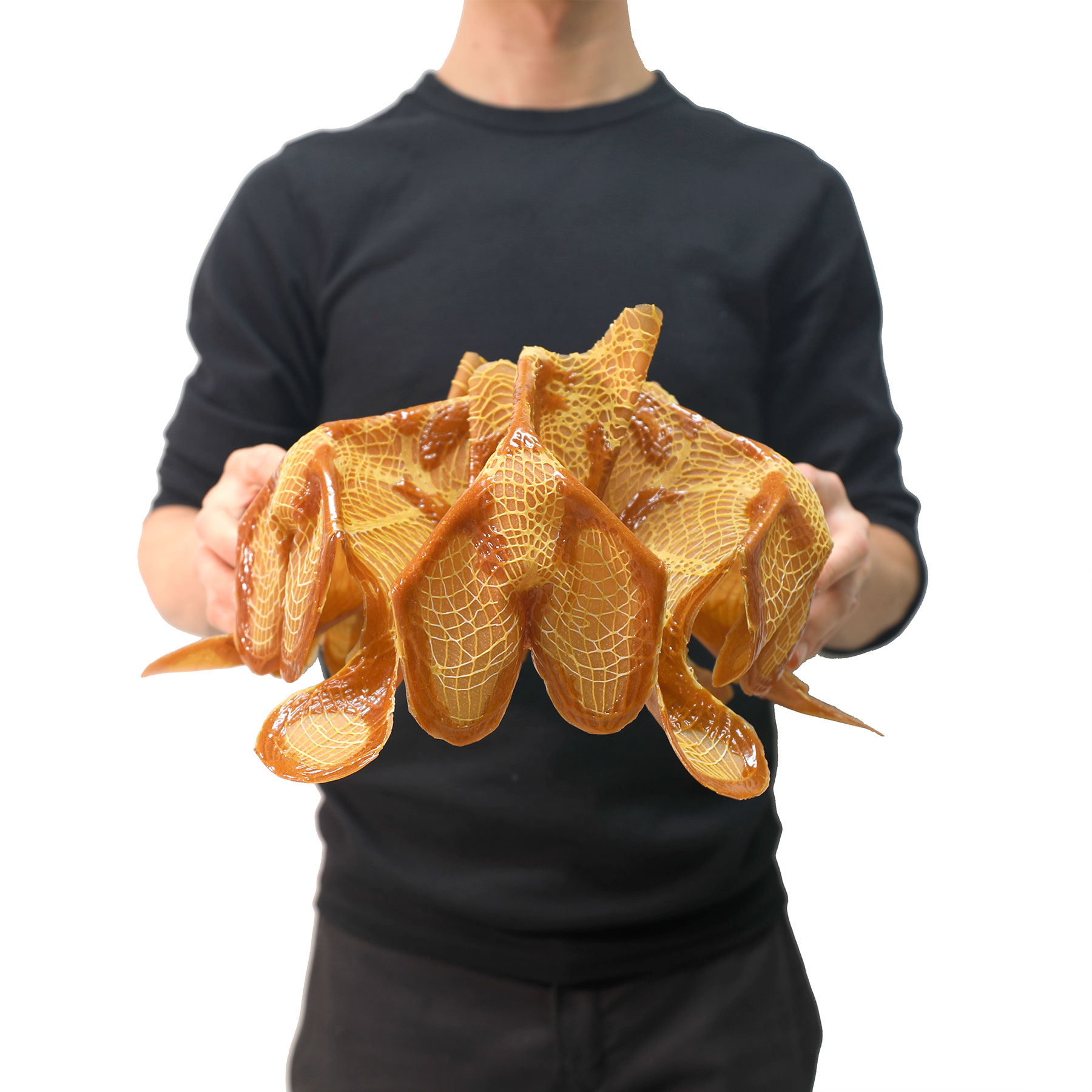
Figure IV: Elevation view of 8 different folded forms.
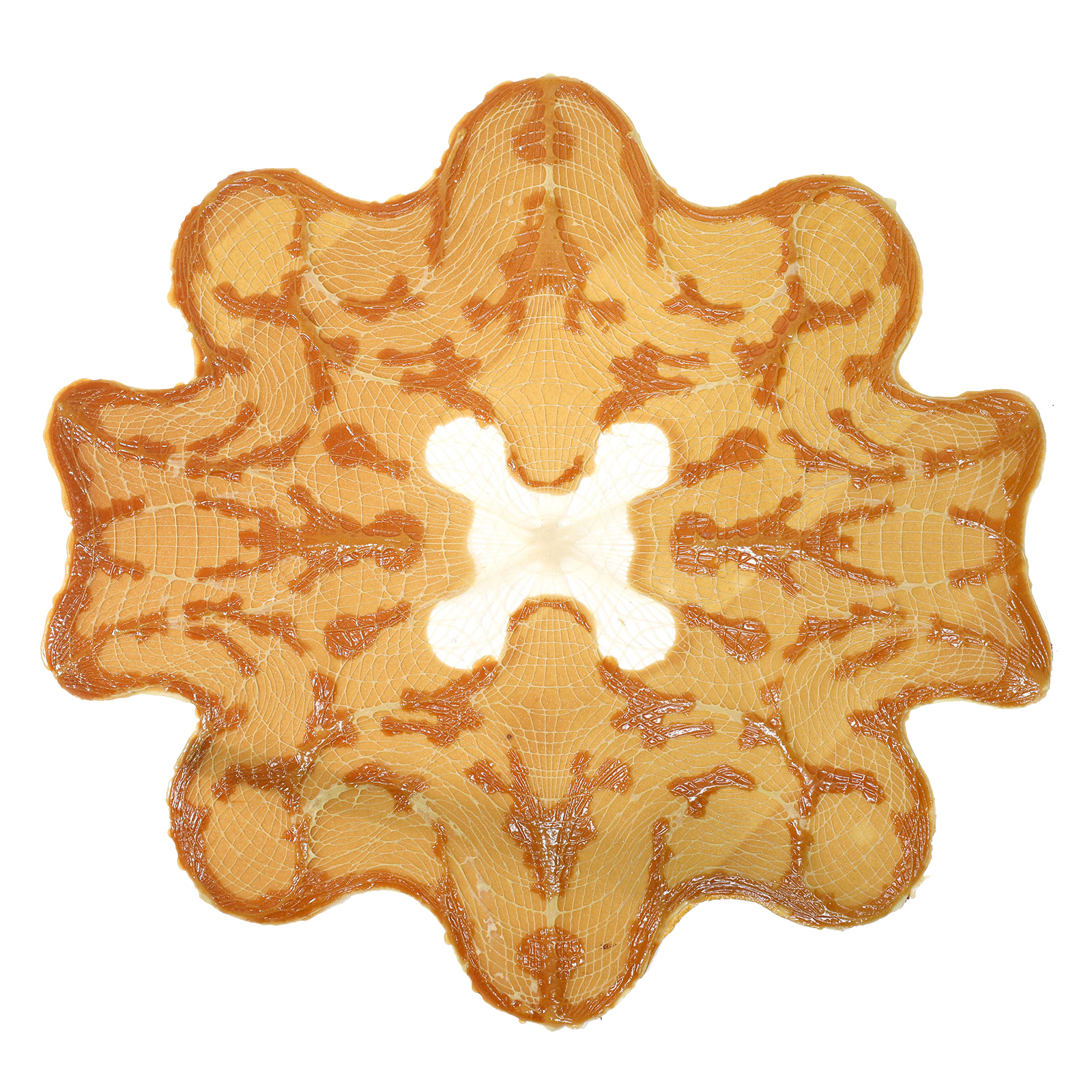

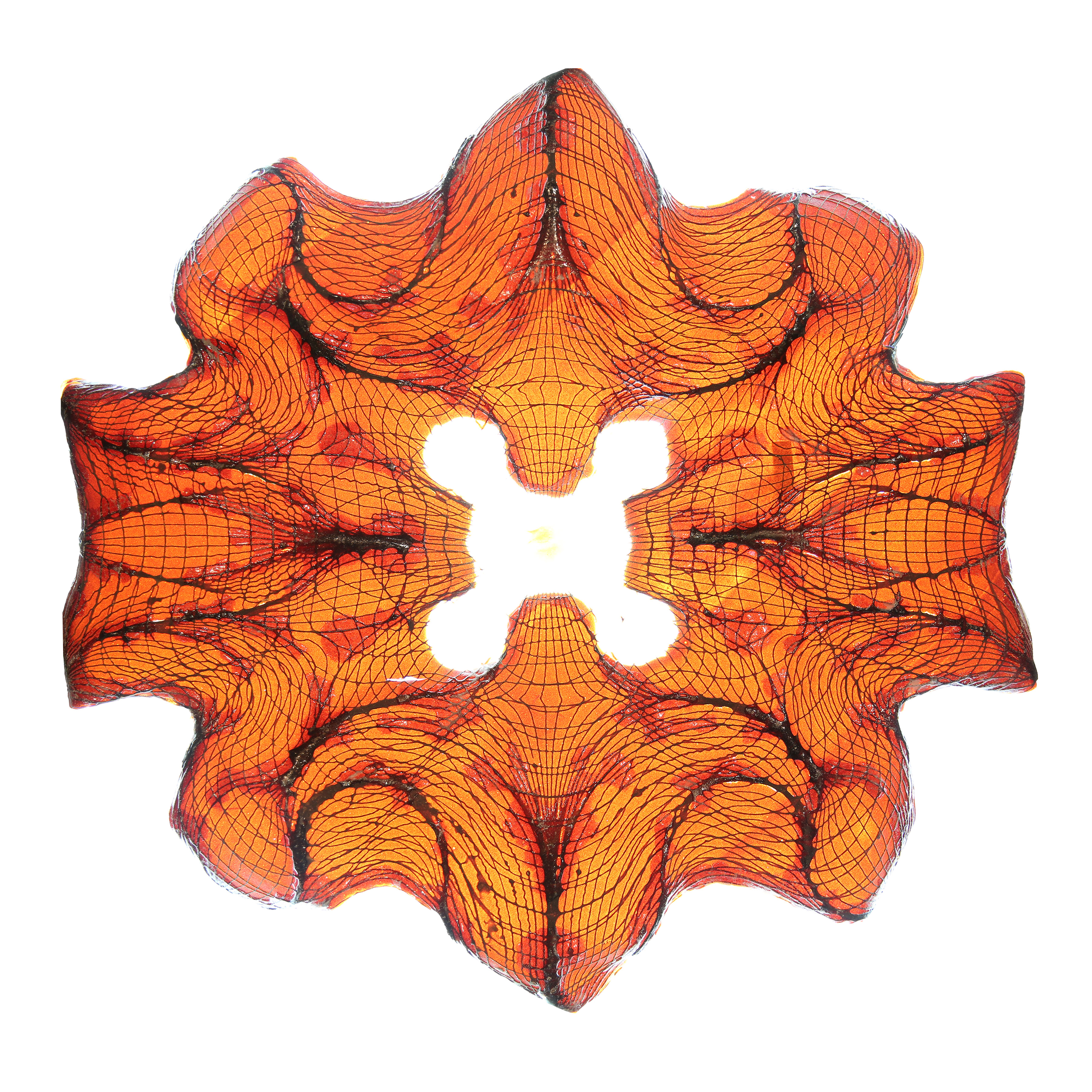

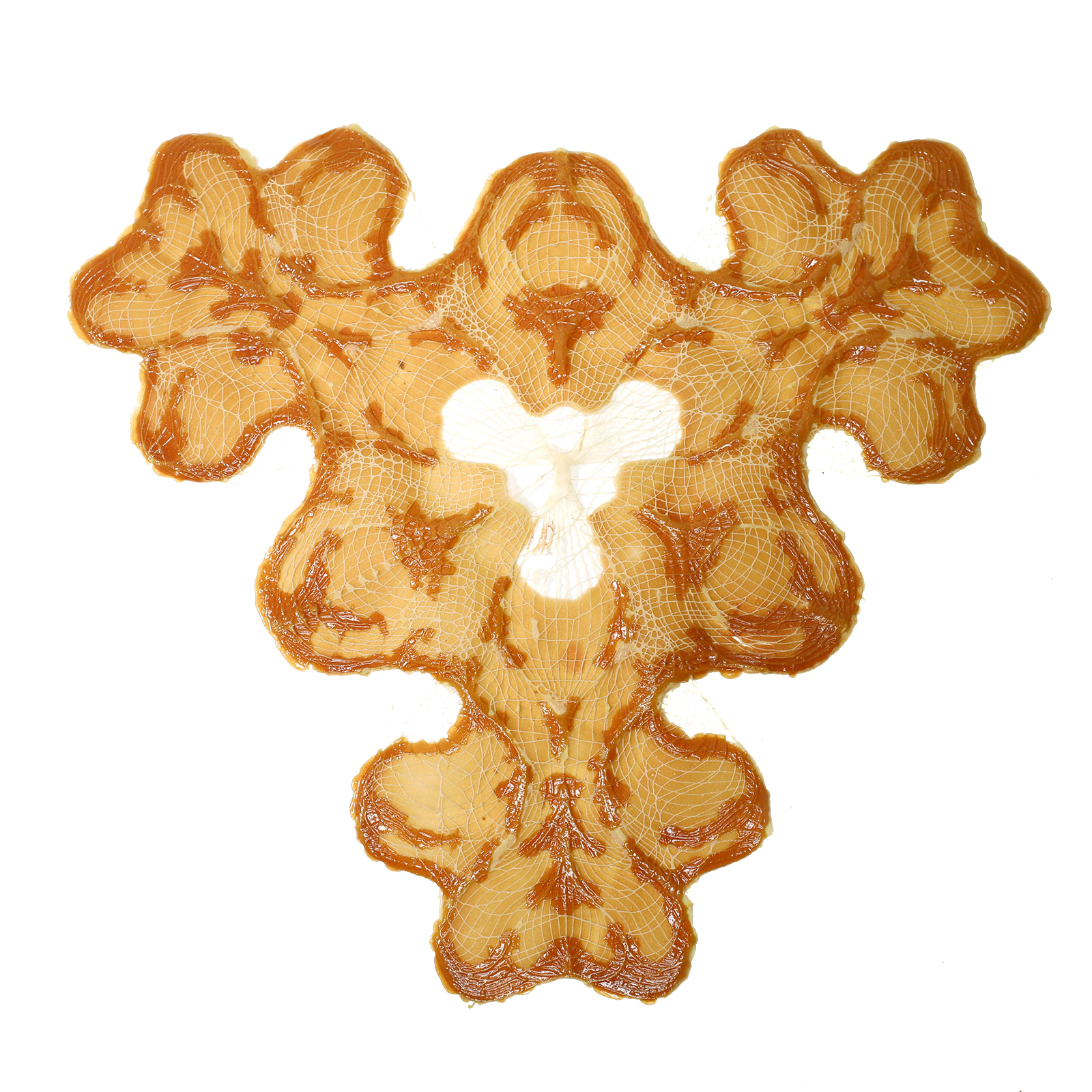

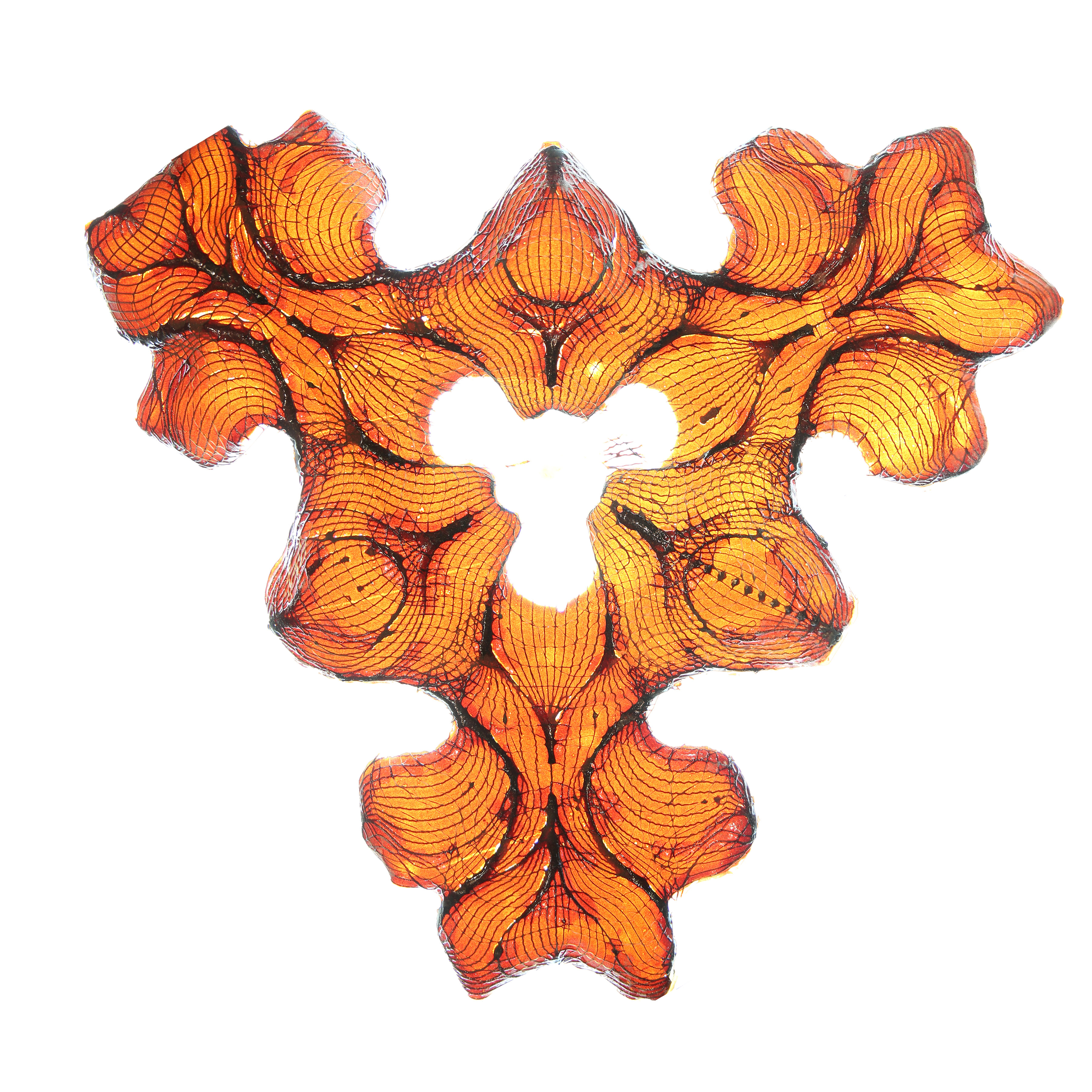
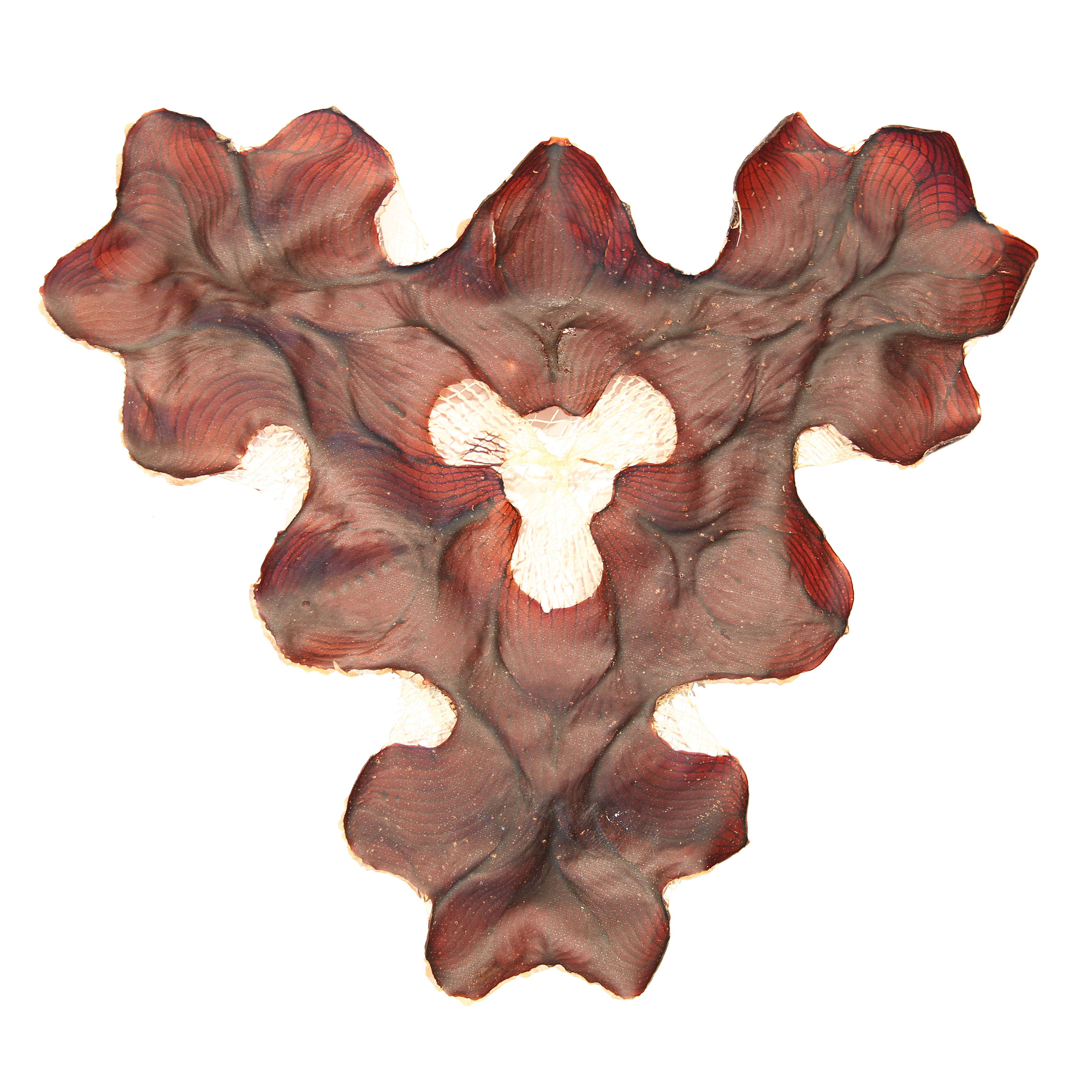

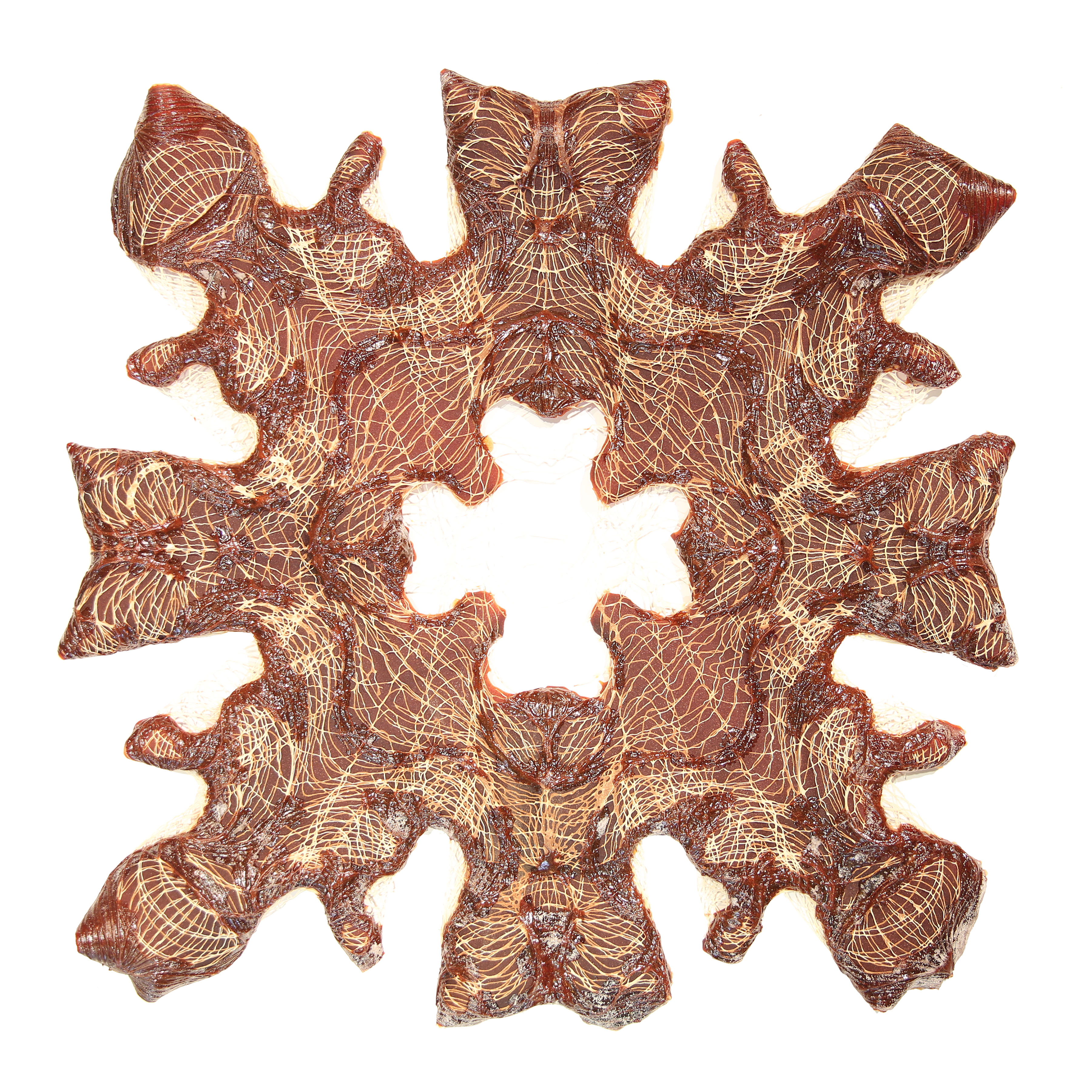

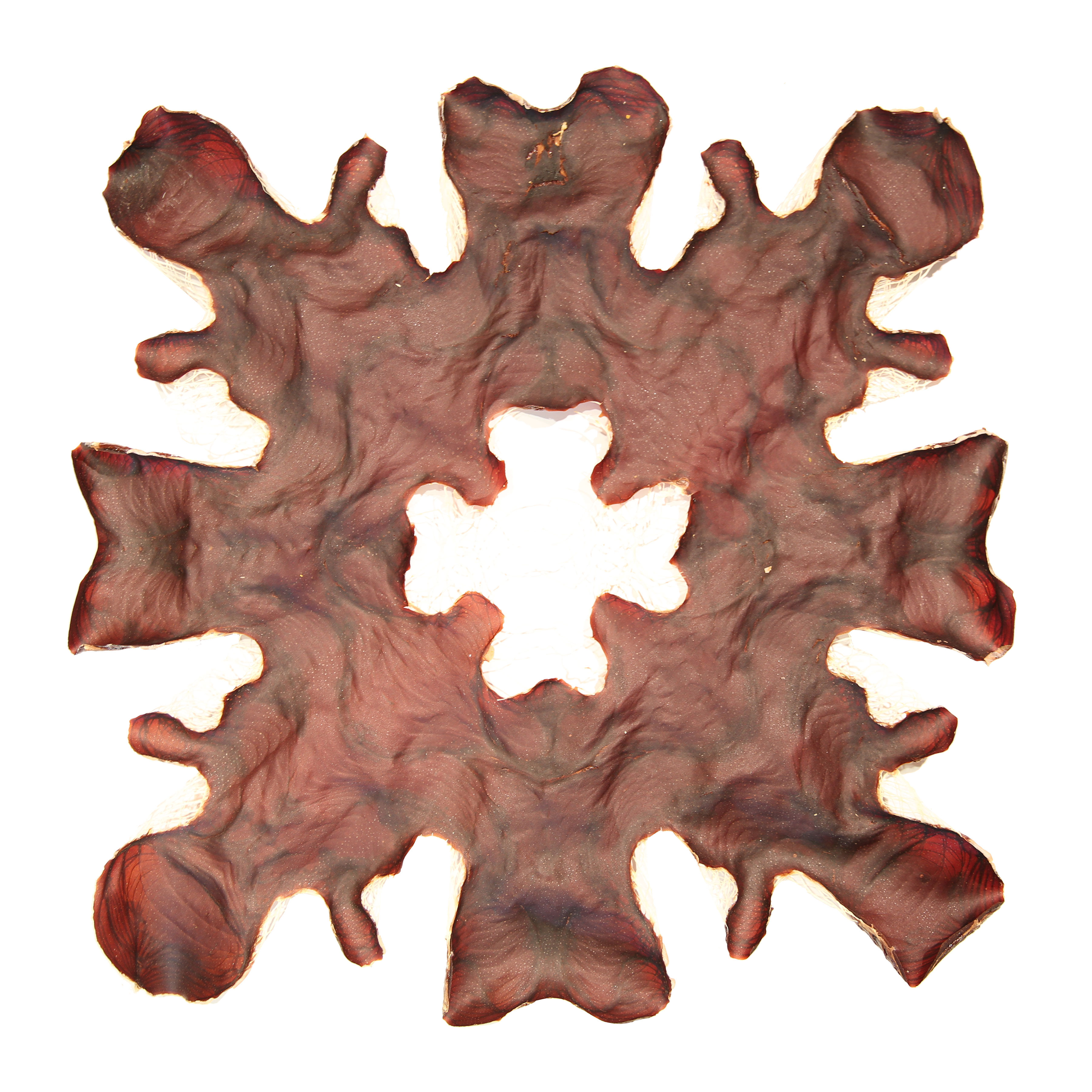
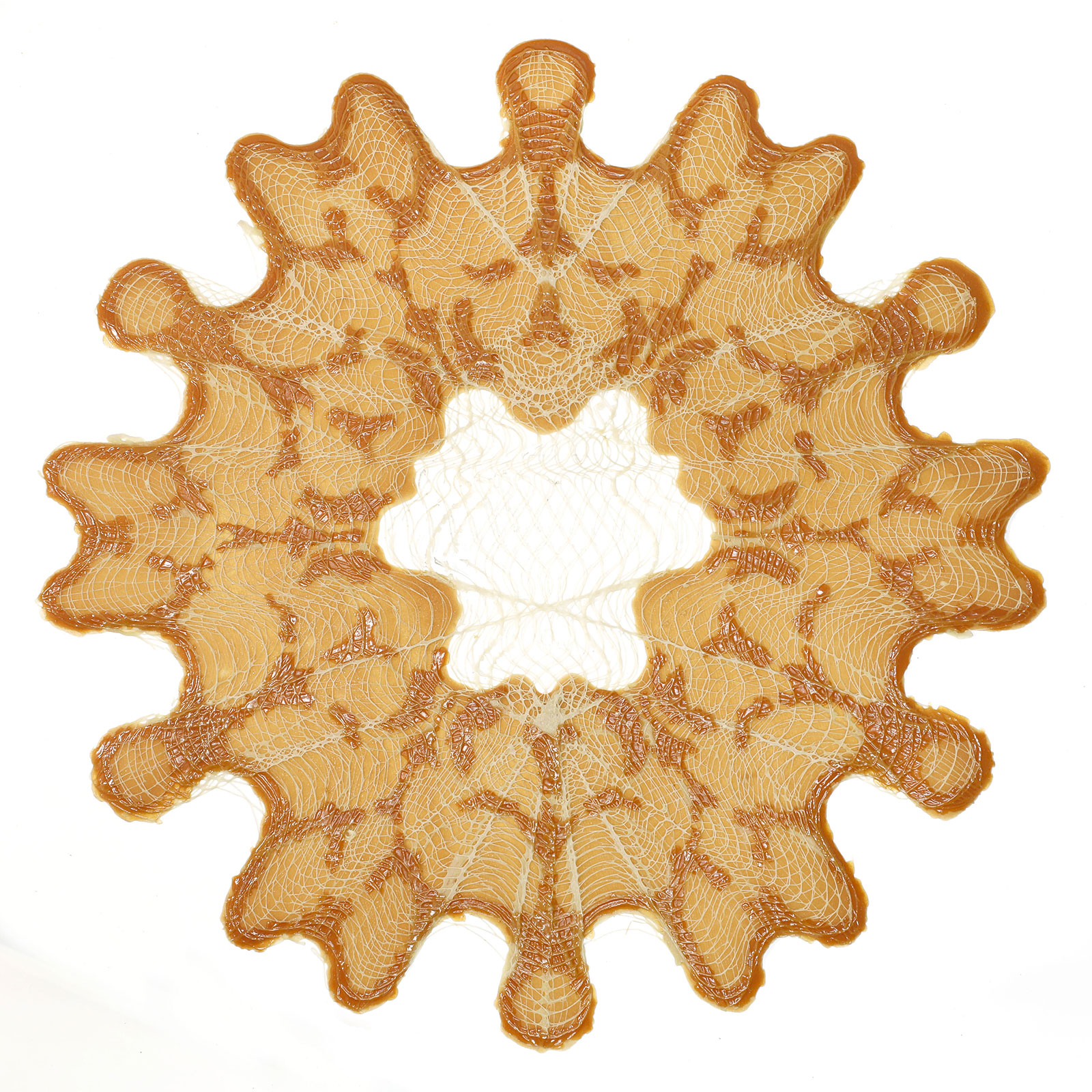






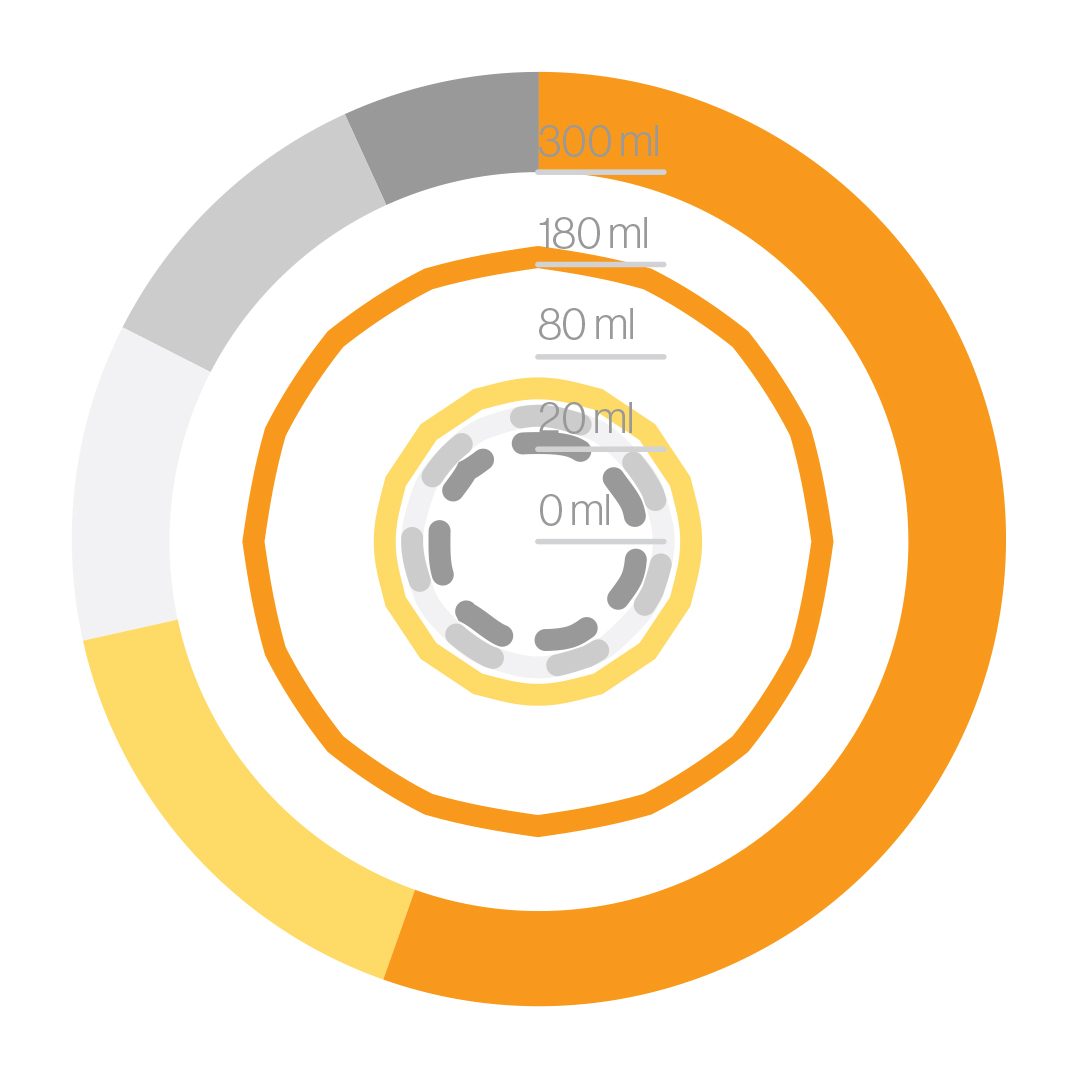

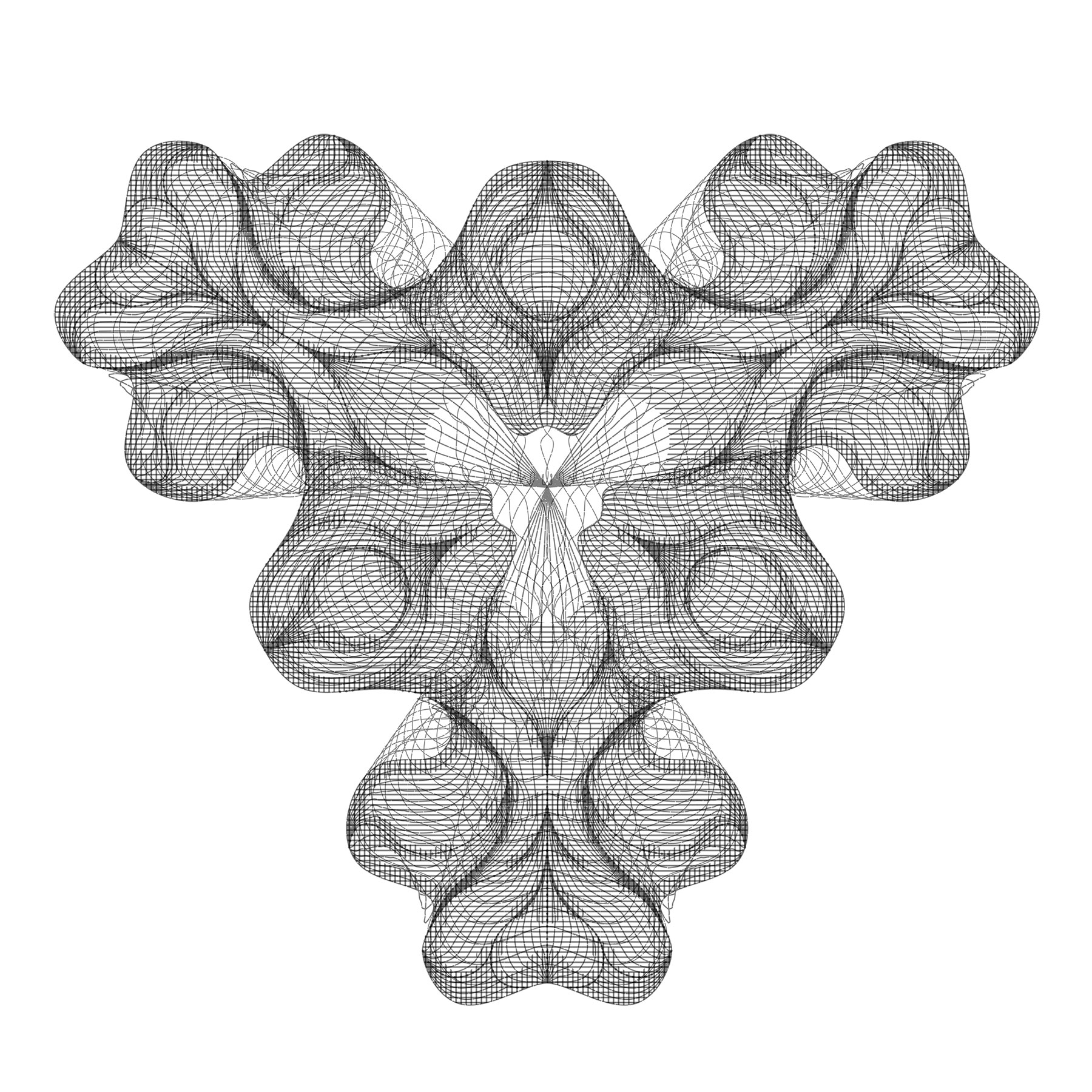


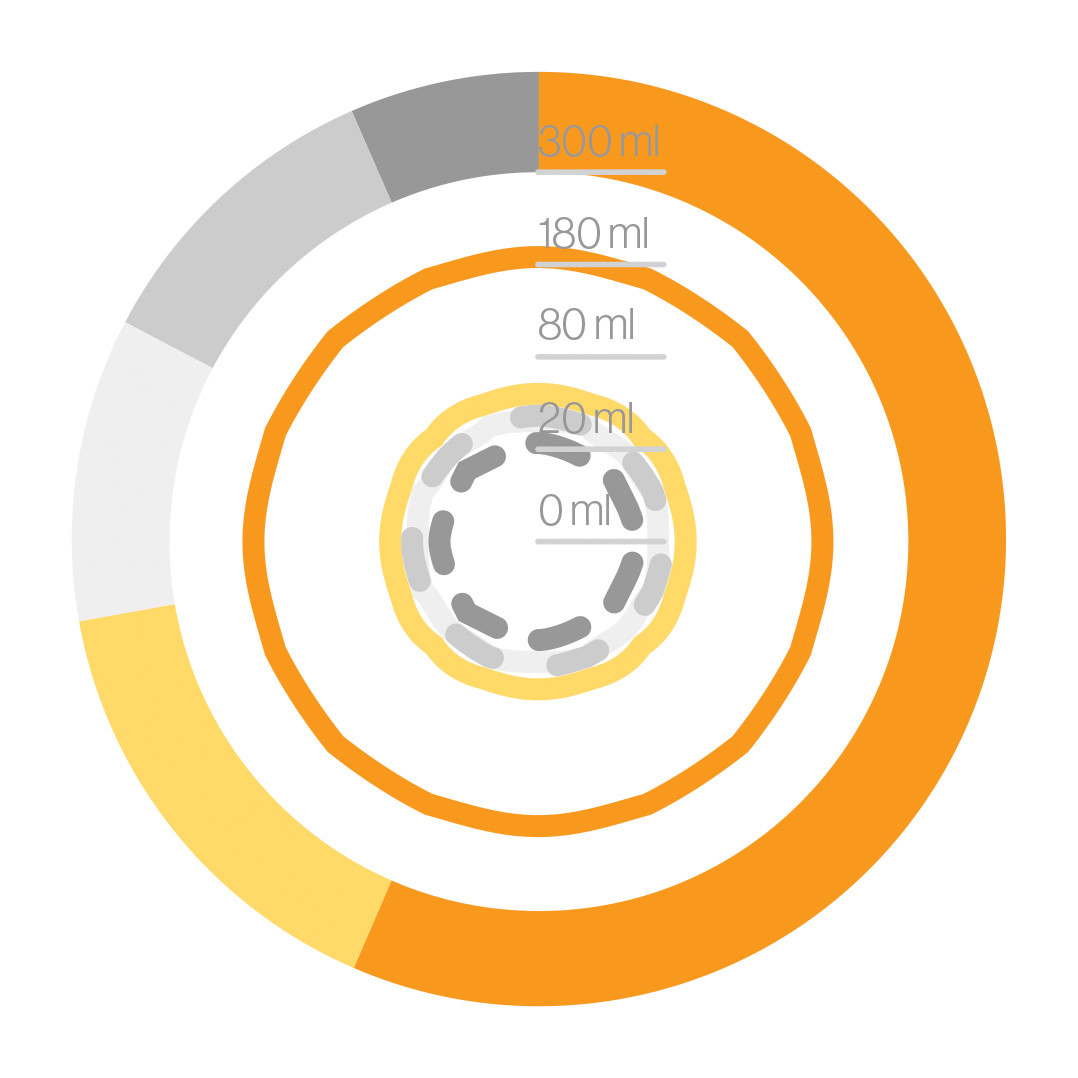
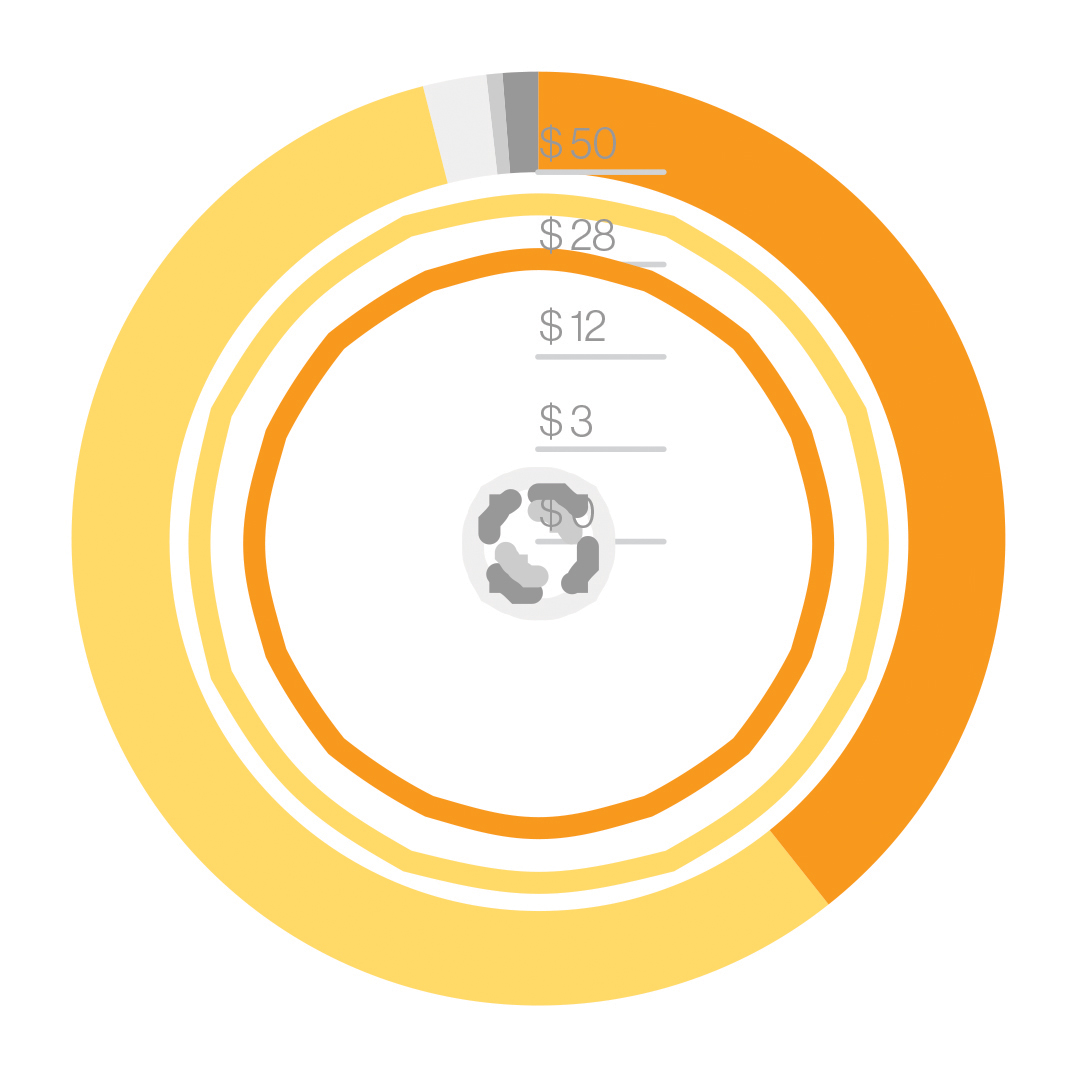

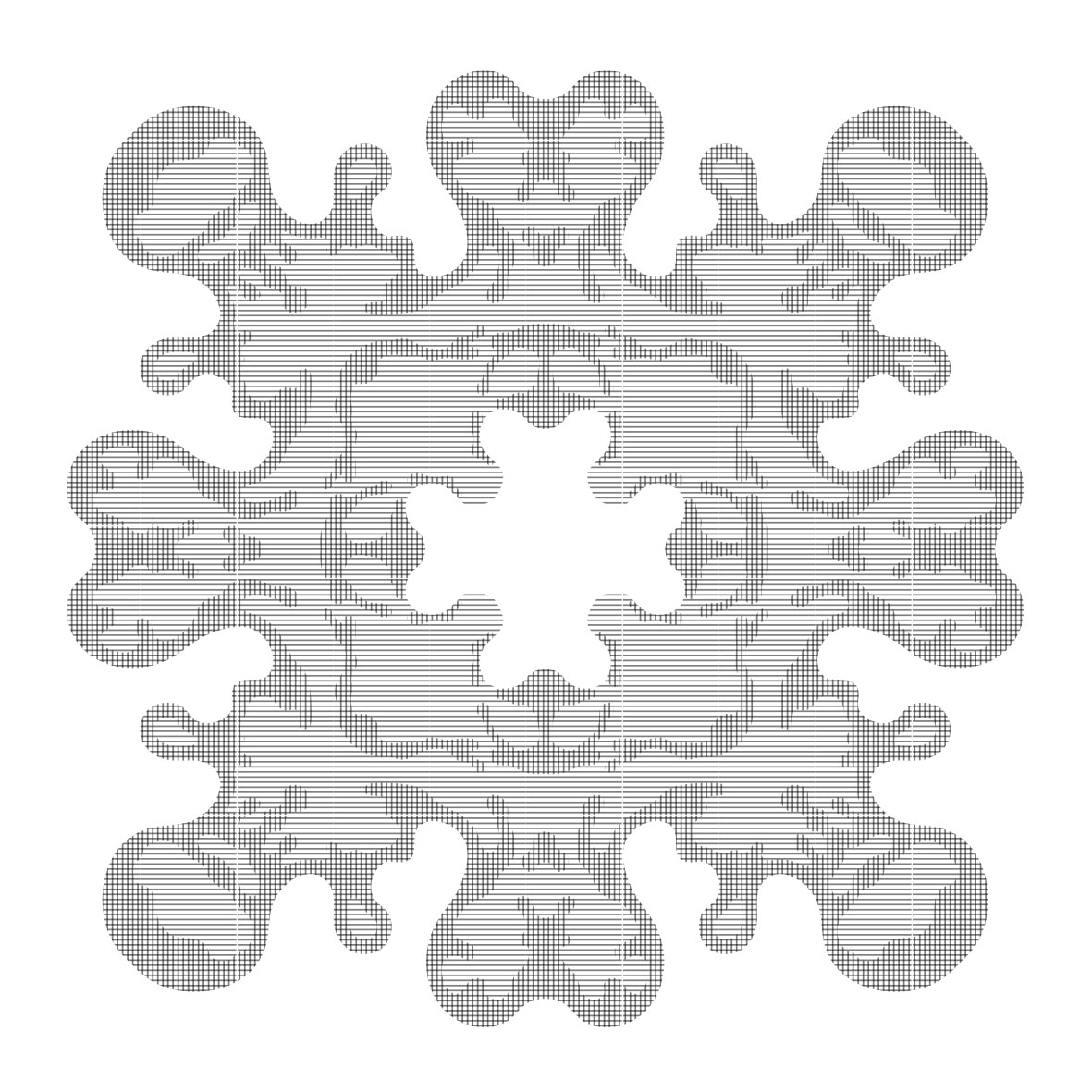

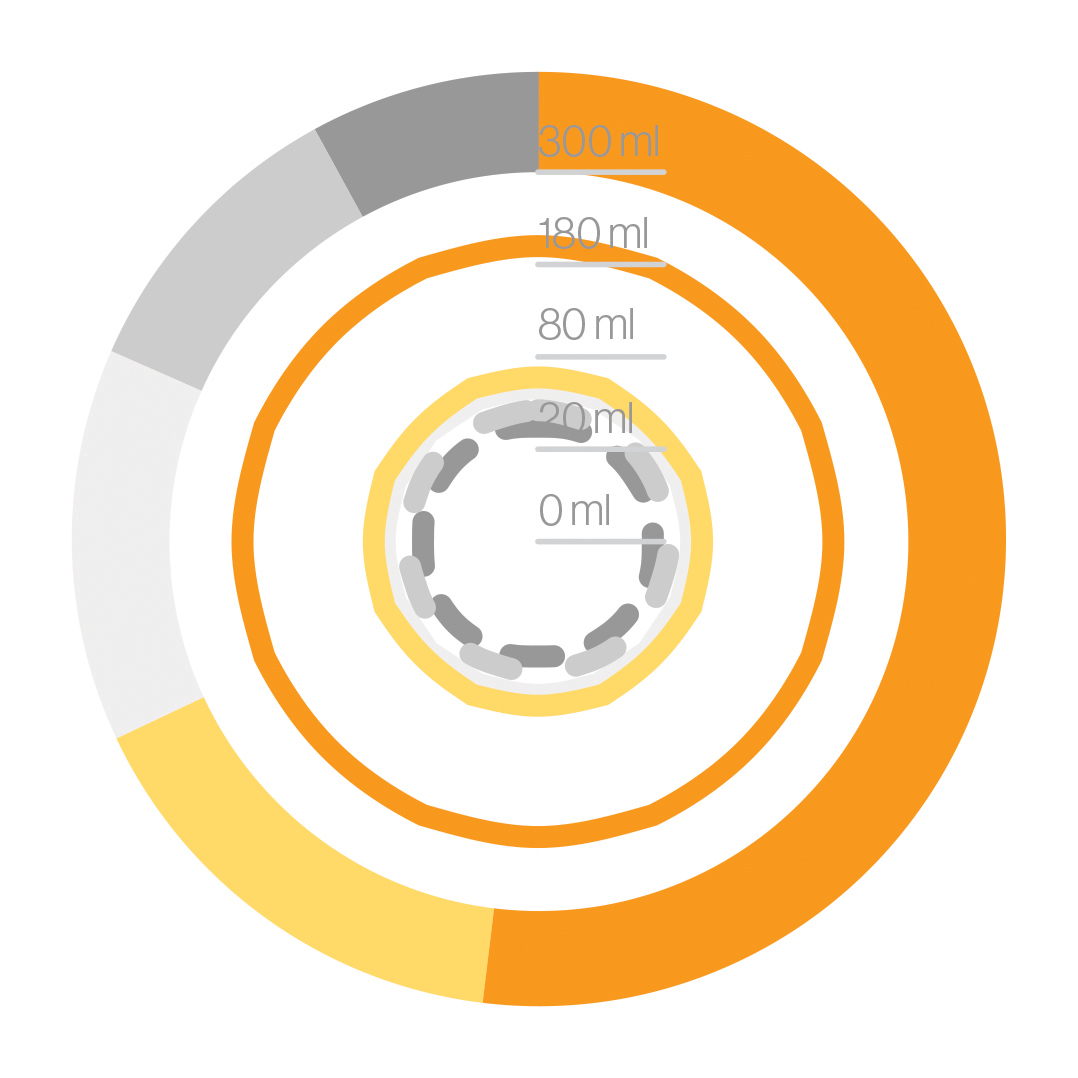
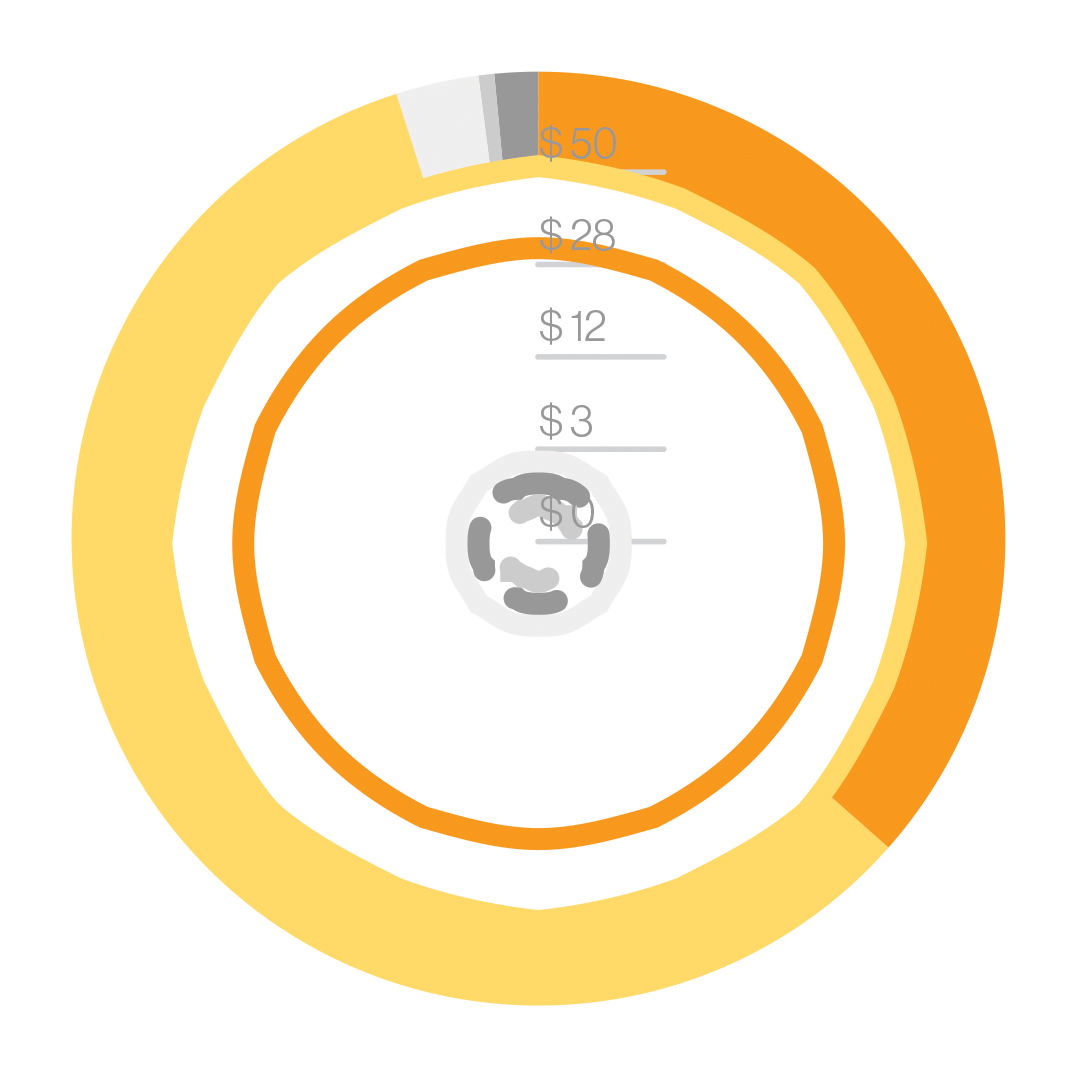
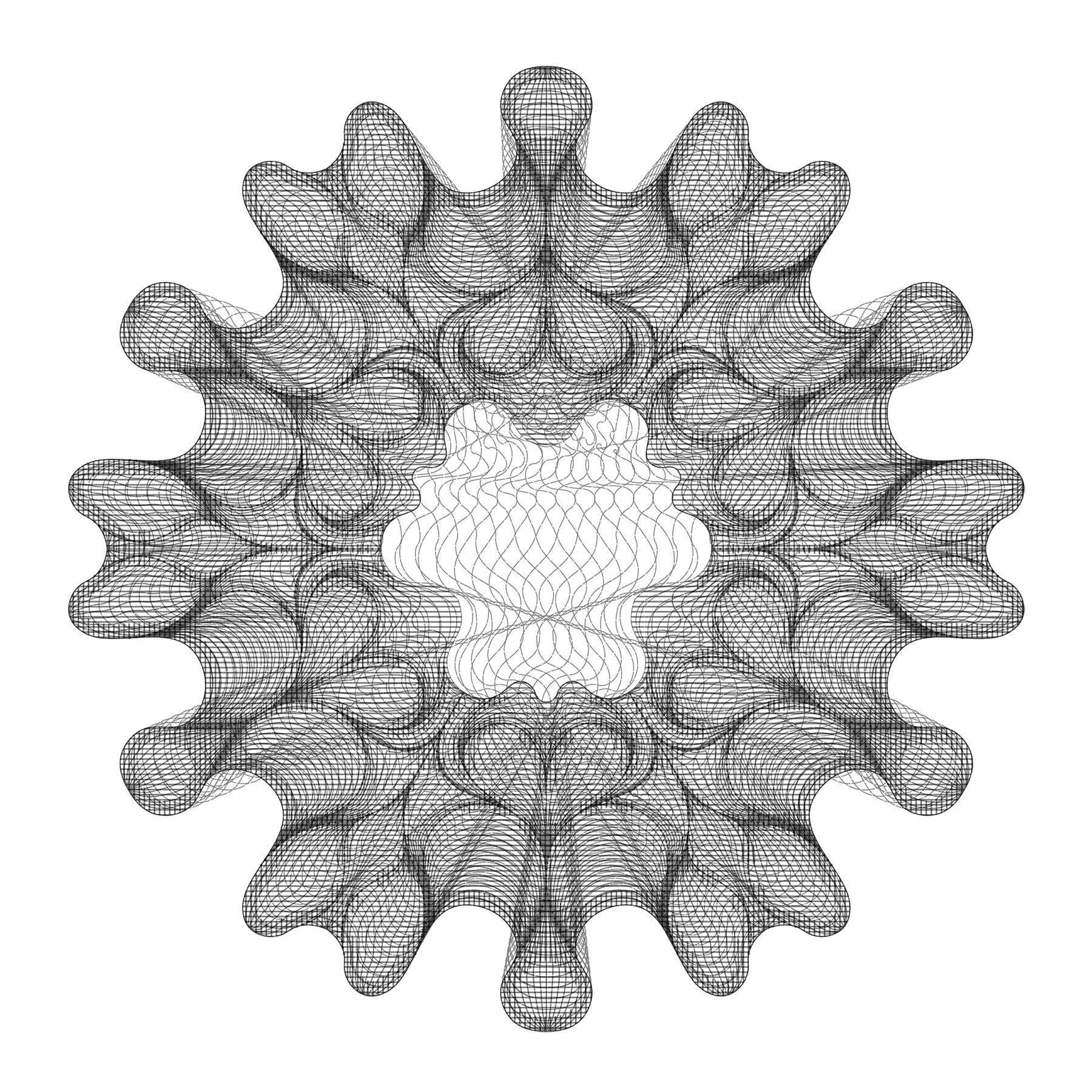



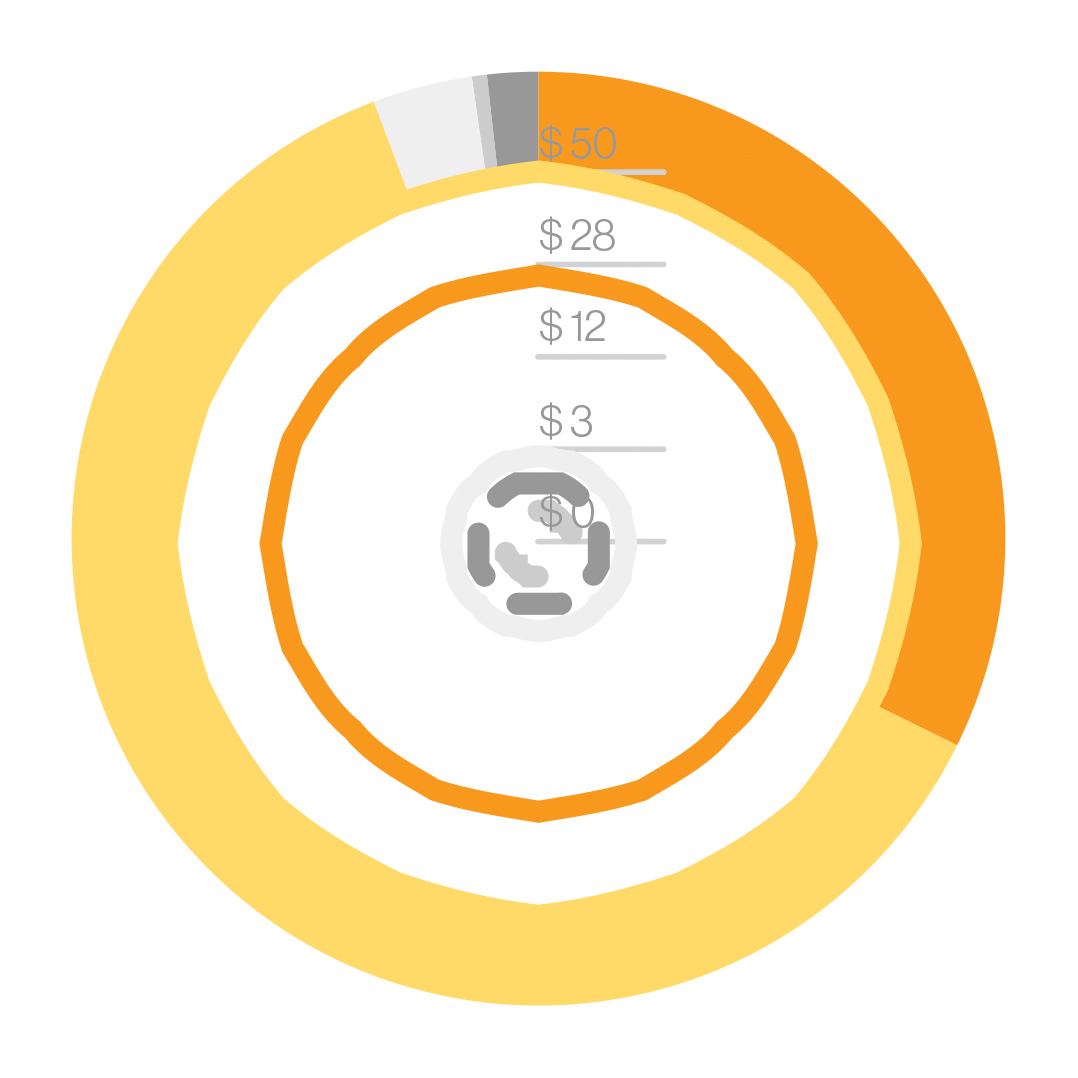
Figure V: Unrolled surfaces and toolpaths from printed biopolymer sheets in set.


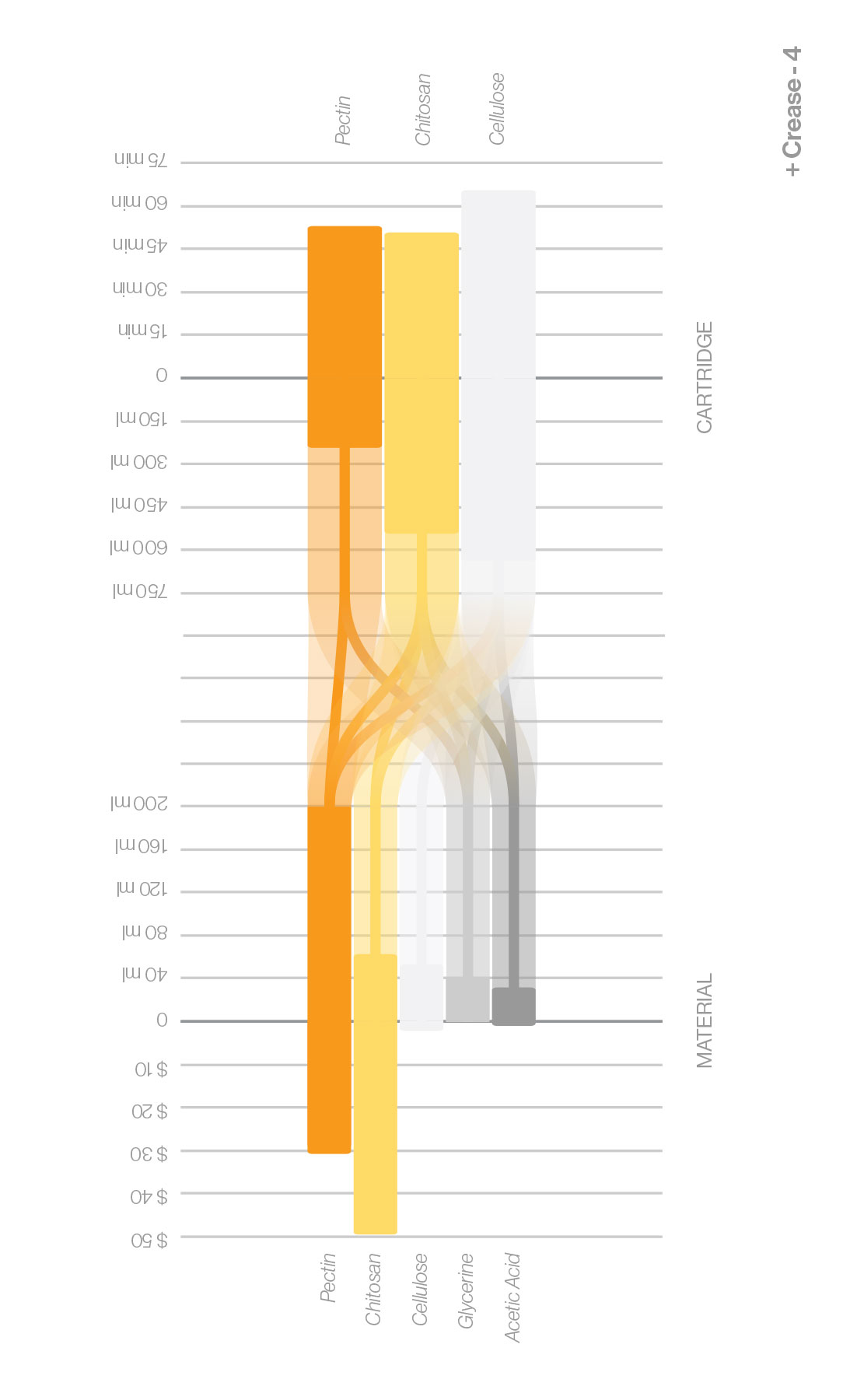
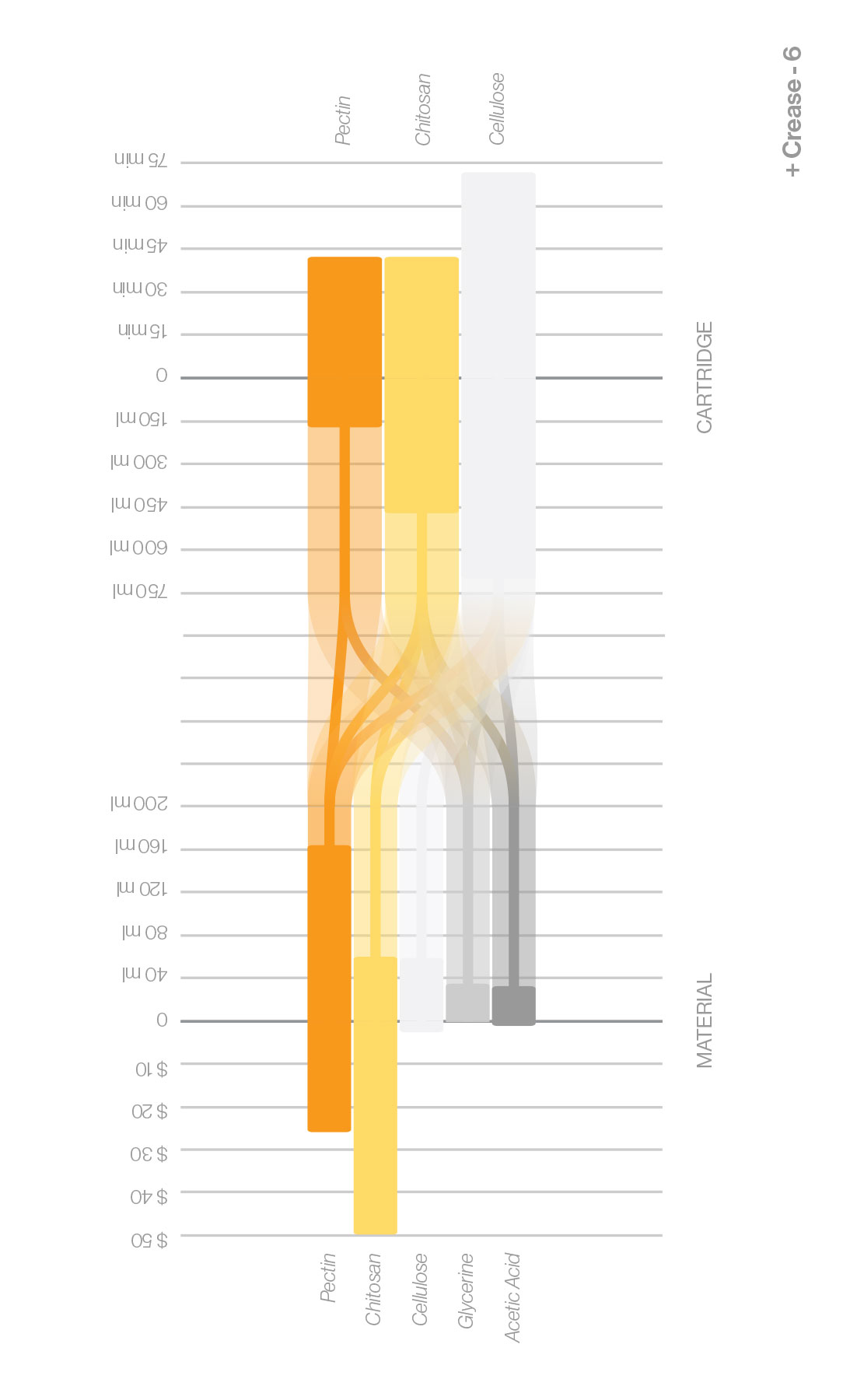

Figure VI: Material cost and volume diagrams from printed biopolymer sheets in set.
+
+ Crease
These experiments examine how creased biopolymer surfaces may deform over time. A series of radially symmetric prints are composed of a pectin chitosan infill base layer with a cellulose lattice surface layer. The cellulose surface layer is generated to align to specific vectors that encourage creasing the surfaces along predefined ridges. The sides and ridges of each print have a region of pectin infill printed above the cellulose lattice. The edges of each of these surfaces are exposed to a humidifier and creased along the toolpaths.
- Exposure to air is recorded during the first month and at 12 months.
- Folded shapes are imaged in plan and side view.
- Changes in color and shape are visible.
4 sets of 2 biopolymer surfaces with 2, 3, 4 and 6 axis of symmetry are tested that control for the same materials, toolpaths and print orders but vary the 3-dimensional geometries.
The pieces experience significant non-symmetric shape and color change.
- Exposure to air is recorded during the first month and at 12 months.
- Folded shapes are imaged in plan and side view.
- Changes in color and shape are visible.
4 sets of 2 biopolymer surfaces with 2, 3, 4 and 6 axis of symmetry are tested that control for the same materials, toolpaths and print orders but vary the 3-dimensional geometries.
The pieces experience significant non-symmetric shape and color change.